Declining Attention Span

Page 12


Page 12
Inflation has been at the forefront of American life and media since the economic slowdown from the COVID-19 pandemic. Many voters cited it as one of their greatest concerns in recent national and state elections.
And closer to home, many Greenhill students also say they are feeling the pinch of rising prices.
Economists across the country say there are several reasons for current inflation, including labor shortages, pent-up demand after the COVID-19 pandemic and major disruptions to global supply chains caused by events such as the war in Ukraine.
The inflation rate has decreased since 2022 when the annual rate soared to 8%. The U.S. Bureau of Labor Statistics Consumer
Price Index pegged the annual inflation rate at 2.6% in October, the latest available data at the time of this writing. That number is in line with the Federal Reserve’s target for inflation this year, which is 2%.
But the fact that inflation has dropped back to the neighborhood of the Federal Reserve’s target is scant consolation for students paying higher prices for snacks, drinks and the occasional pencil or notebook.
“The prices are just far too high for what they have in there,” said senior Max Johnson.
The subject of Buzz prices is more complex than you might imagine. The vendors Greenhill uses are continuously

changing their prices, according to campus store manager Anneli Phillip, who sets prices for The Buzz with Director of Operations and Logistics Crystal Dixon.
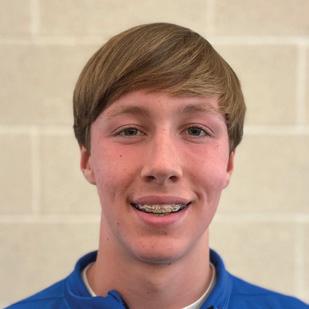
pandemic.
“I’ve not seen those vendors’ prices go back down,” said Phillip. “So that’s just one thing I have to think about strategically.”
Some snacks at The Buzz don’t have as hefty of a price tag as others. Phillip says this is because she is willing to break even on some items, as long as The Buzz makes an overall profit.
“There’re some products that I’m willing to break even on because it’ll even out,” said Phillip. “But then there’s some products where I’m like, ‘Oh, I can’t break even on that,’ because if I break even on that product, then I’ll break even across the board.”

The Buzz is undoubtedly one of busiest locations on campus, but for many students, the prices are a bit on the steep side. That’s not a new phenomenon, but, perhaps with all the talk about inflation, some students are because I’m like, ‘Wow, it was a little pricier than I thought,’” said junior Kendall Johnson. “I used to always go to The Buzz to hang out with my friends, but now we’re like, ‘Oh my gosh, we don’t need to go as much.’”
AStudent Council committee is engaged in discussions with Upper School administrators that could culminate with a ban on phone use during school hours.
The committee was formed in October on the recommendation of Head of Upper School Trevor Worcester.
Worcester’s study of possible changes in Upper School phone use was set in motion by a 2024 New York Times bestselling book by psychologist Jonathan Haidt. Last spring, Worcester says he found himself engrossed in Haidt’s “The Anxious Generation,” which sparked reflection on the role of cellular devices in modern childhood.
“[Phones] have created a safety net that has actually overprotected [students],” Worcester said. “The risks I was able to take as a kid have gone away. It’s not just about the phone ban. It’s also about the way in which over decades, childhood and growing up has changed.”
Led by senior Aman Jaleel, Student Council president, the committee includes the president, vice president and secretary of each grade. Each meeting, the representatives discuss the logistics of a potential phone ban and share opinions.
Worcester says he decided to call upon the Student Council to form this committee so the cell phone policy for next year could
be shaped with student input, while also enforcing needed regulations on phone use.
“I don’t profess to know everything about all this,” Worcester said. “I’ve read the books and done the research, but I’m not living your lives. This truly is a conversation this year, with students, with faculty and with families, to figure out what seems to be the best way to go about this.”
Members of the Student Council say they appreciate this approach.
“We want to make sure that student voices are heard and having the committee helps administration consider the students’ opinions,” said Jaleel.
Student Council members prepare for meetings by individually forming their arguments ahead of time. Then they discuss their findings as a group.
The meetings are held in a questionand-response format where Worcester will pose questions and members of the committee will provide their input.

“Mr. Worcester is definitely openminded, and he’s really good at listening to what we have to say,” said sophomore
Mahedhar Sunkara, who is also sophomore class president. Senior class
officers are less involved with the phone committee, as the regulation won’t affect them, according to Jaleel.
“We decided to keep the phone committee small for easier discussions,” said Jaleel. “Since the policy won’t affect seniors next year, only freshman, sophomore, and junior officers are on it. [Seniors] Eitan [Hahn], Amanda [Park], and I still meet with the committee, but senior class officers aren’t included.” As the committee meets throughout the year, junior Hazel Goes-Young, class vice president, says they aim to reach a compromise between administrators and students.
“I think we are going to try to find a middle ground,” said GoesYoung. “Worcester is pretty set on what he wants to do, but he still wants to hear our feedback and see if there are any ways to improve it or switch his policies.”
Talk of the phone ban will continue throughout the year, but Worcester says administrators are listening to what students have to say and are open to discussions.
“As much as I have something in mind, I want people to understand that I am listening and I am curious about how this is going to impact students, faculty and families,” said Worcester. “So, I welcome the conversation and feedback.”
Alexis Chen, Cindy Chou, Ethan Sadka
Three years ago, Upper School robotics students worked in a cramped 920-square-foot space to build robots for competitions. They functioned as a club, rather than a formally recognized Upper School program. And while they were competitive in their tournaments, they were far from dominant.
Nine months after opening the Rosa O. Valdes STEM + Innovation Center, the Greenhill robotics program has settled into their new, vastly larger space. And as of early December, they were in 1st place in their league.
The success has been the result of both the new space and the personal growth of team members, according to Upper School Innovation teacher Joseph Meagher, who coaches the robotics teams.
“The new building gives us space to grow and space for the kids to work so we can now spread out and really accomplish more in a smaller amount of time because we’re not right on top of each other,” said Meagher.
Before moving into their new space, robotics team members had to set up and then deconstruct the competition’s task field each class period on the carpeted floor of the Elliot Center. That took time and effort that could have been devoted to other tasks.
Because the field is a dedicated space in the new building, it is much easier for team members to test large scale trials whenever they’re free.
“We have all the tools that we need right at hand,” said Meagher. “In the old space we didn’t. Everything was compact and tight.”
Robotics team member Tej Sachdeva agrees.
“This year we have the full field permanently set up,” Sachdeva said. “We have access to a bunch of new tools and new equipment that really streamlines [the] process.”
Since moving into the new building, the program has access to over 7,500-square-feet of space, more than eight times the space they previously had.
The Greenhill robotics program is split into two main groups: In the first group, students build and program a robot for competitions; in the second group, students build and design a mechanism for Carrollton-based ILLES Foods Inc.
Work in the competitive group is divided among three sections, each focused on a different aspect of the robot construction. The sections are devoted to designing, building and coding.
“Each [section] works together and gets their own individual work done,” said Meagher.
The design group is led by Sachdeva, who oversees the 3D modeling of the robot and creates 3D-printed parts.
The group uses a software program called Onshape that allows them to digitally add and manipulate the parts on the robot in detail. If the team is missing a part for the robot, it is up to the design team to find a solution by 3D printing a piece with the correct measurements and properties.
claws or buckets to add to the robot, depending on what is lacking, said Sachdeva.
Another section is the build group, headed by senior Kaden Castillo.
As the building captain, Castillo guides his group members through certain projects that need to be done and provides advice to help improve the robot’s structure.
The group “tends to get hectic,” but coordinates with each other to get the job done in the end, says Castillo.
The build group is responsible for taking the digital models from the design group and translating them into a tangible robot.
The final section is the program or code group, led by sophomore John Sewak.
A challenge that the programming group faces is planning and then coding the robot’s path.
If the code is not perfect, the group must find the mistake, which “takes a lot of trial and error,” says Sewak.
The sub-groups are all in constant communication, which allows for a smooth process.
Teamwork is required by everyone involved to maximize efficiency toward a common goal, where “everyone knows the plan,” says Sewak.
The other group in the robotics program consists of four students working on a conveyer belt model for ILLES.
Inside ILLES’ factory, there are bags of spices coming down a conveyer belt, with human workers counting them and placing them into boxes.
The issue that ILLES has is keeping the number of bags per box consistent, which is where the Greenhill robotics students come in. The group has been working to design and build a model of a mechanism with “Bombay doors that close to hold back the bags” while they’re falling, says group member Oliver Burke.
Their ultimate goal is to finish the project and devise a solution within this year to give to ILLES.
Every competitive season, Hornet robotics team members face different tasks.

The group will create various parts such as 3D-printed
During a competition match, the team has to complete different objectives on the game field. This year, the game field is split into two alliances: the Blue Alliance and the Red Alliance. Each alliance consists of two teams.
Each game is 2 minutes and 30 seconds. During that time, the alliances must use their robots to grab blocks from the center of the field and then place the blocks in designated locations around the field.
There is also an area on both sides of the field where a “human player” takes the blocks given to them by the robot, puts a clip on the block, and hangs it on the side of the playing field.
The clipped block is called a specimen.
The robot then removes the specimen and brings it over to the center of the field, where it hangs the specimen on the metal bars surrounding the multicolored blocks, according to Sewak.
For the first 30 seconds of a game, the robot is completely reliant on the code, followed by 2 minutes of remote-controlled driving. The robots can score in both periods.
At the end, the robot must climb up the two-level center
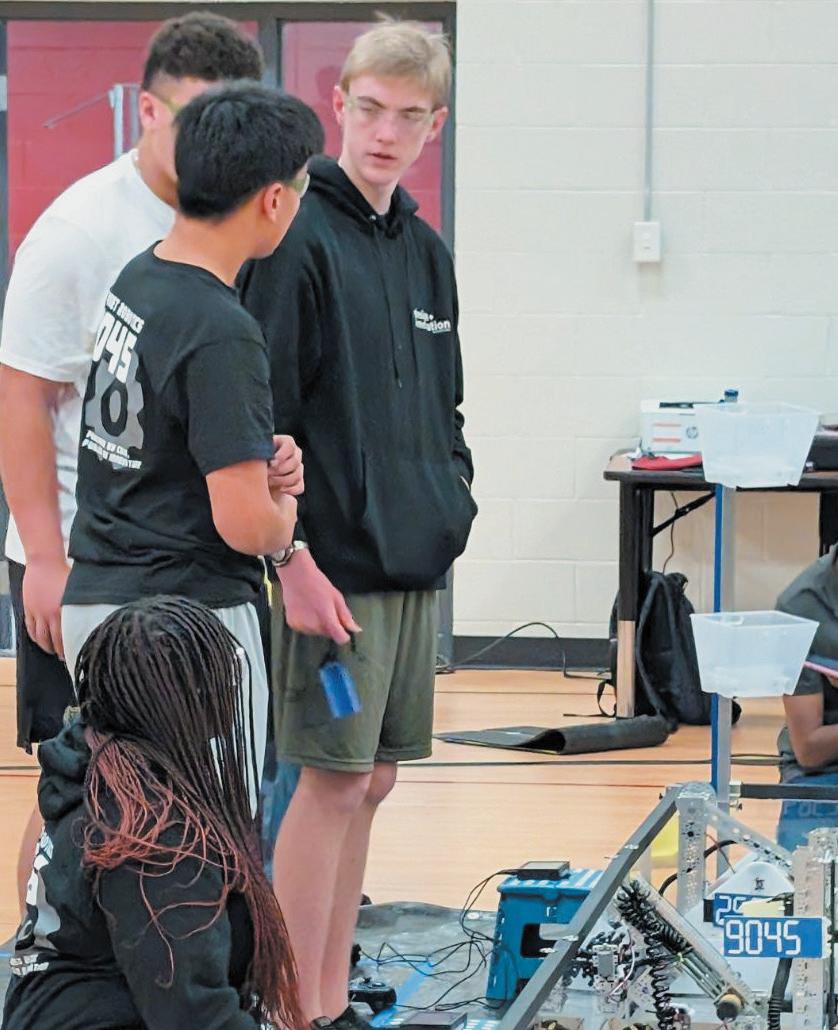
area to receive more points.
During tournaments at the end of a season, the team presents their robot’s design and coding to judges to ensure that the robot matches certain criteria.
Based on the presentation, there are six categories of awards that the team can win.
If a team does well across all categories, they are eligible to receive the Inspire Award, the most prestigious award at a tournament.
There have been multiple challenges that the robotics team has had to tackle this year. From a technical perspective, “finding the right block and hanging it in the right place” has proven to be difficult, said Meagher.
Another challenge comes from the expectation of “the kids to support and lead themselves,” said Meagher.
As the coach, Meagher provides a little direction and guidance, describing how it is a “unique challenge in itself” to have high school students learn to become leaders.
Despite these challenges, the robotics team has gotten off to a strong start this year.
In the first league meet, the team won six of seven games and emerged No. 1 in the league, which is much “better than last year,” Castillo said.
The teamwork and new equipment have contributed to their success in the competition, according to Sachdeva.
“Our goal this year is to make it to the very top,” Castillo said.
Last year the team made it to the area championship for the North Texas region. The goal this year is to make it to the international level.
“My little thing is to always improve, practice and take the next step.” Castillo said.

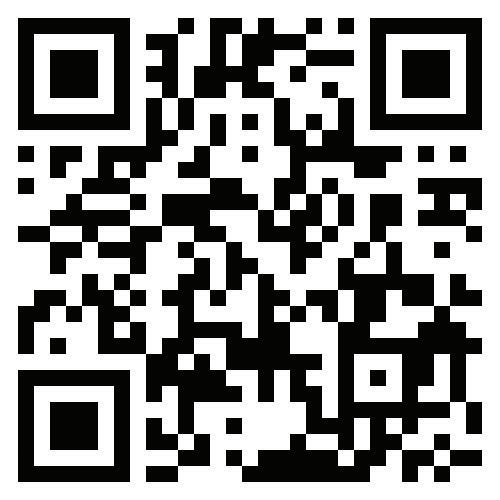
Daniela Hallack
The TeenAge Communication Theatre is a Planned Parenthood initiative in the Dallas-Fort Worth area where students not only learn about various mental health subjects with an emphasis on sexual education but also perform skits around the area to educate others.
Many students fulfill their community service requirements through the theater. It allows group members to learn about a variety of topics and educate the Dallas community through skits and performances, according to the Greenhill students who participate in TACT.
The goal of the group is to provide teen-to-teen education for students wanting to learn more as well as spread that knowledge, says senior Kendall Poglitsch. They often perform for schools, churches, shelters and juvenile detention centers.
“I think TACT is a really great way to get a message out about mental health topics that some communities, especially in downtown Dallas and the juvenile centers where we perform, might not hear,” said sophomore Valentina Rojas, a first-year TACT member.
Many of the performances exceed students’ comfort levels, says Rojas, as they have to get up in front of large crowds and perform about things like body image, abstinence, sexual orientation and teenage pregnancy.
The skits are rehearsed during the group’s weekend meetings and then performed later on.
However, after being on TACT for three years, Poglitsch says she now feels more confident in her abilities.
“It’s brought out my confidence because you do have to get up there and perform on skits that can be uncomfortable topics sometimes,” said Poglitsch. “I feel like I’m a much better public speaker because of it as well.”
Although the skits are meant to educate other people, some TACT members say it has been an educational experience for them. They get to learn more about these subjects for themselves, but also realize the lack of information or misinformation in the community.
“It’s opened my eyes to the lack of knowledge that some people have on sex [education],” said junior Kendall Johnson, who has been a TACT member for two years. “I think it’s just kind of allowed me to spread my knowledge and help others educate themselves.”
Poglitsch and Johnson have both risen through the group’s hierarchy to become what are known as Team Leads. These are group members who don’t act but instead play an educational role.
The group performed skits about bullying, stress and sexually transmitted infections.
“No one has ever really sat down and tried to give them that opportunity to learn. So, I think it really resonated with me,” said Rojas. “They were asking questions, they were interacting. It was a great time.”
TACT is more than just performing skits and putting a lighthearted spin on these serious issues. Many of its members find that it helps other young adults grasp the gravity of these topics. Johnson says she tried out for the theater because of this.
“I think it does a really good job with making teens aware of the challenges that they’ll face in certain situations pertaining to sex [education] and makes them more aware of some of the dangers of the topic,” said Johnson.
Although Rojas is a new TACT member, she has known about it for a while. Her older sister was also involved in the program during high school, and she says that made her curious about the things TACT had to offer.
“Since my freshman year, I’ve been involved in Planned Parenthood with


At the end of skits, the Team Leads direct questions to the audience and sometimes the people in the skit will stay in character so the “Team Leads” can ask them questions.
One skit that stood out to Rojas was when the TACT team performed at Cafe Momentum, a restaurant that employs teenagers from the ages of 15-19 who have been involved in the youth justice system.
“Especially because my older sister had been in TACT during high school, and it looked like so much fun.”
Poglitsch says if information about sexual education is given to teenagers from other teenagers, they’ll be more receptive to learning, and applying it to their lives.
“I fully believe that teens are more likely to listen to other teens or actually take in account that information and actually utilize it,” said Poglitsch.
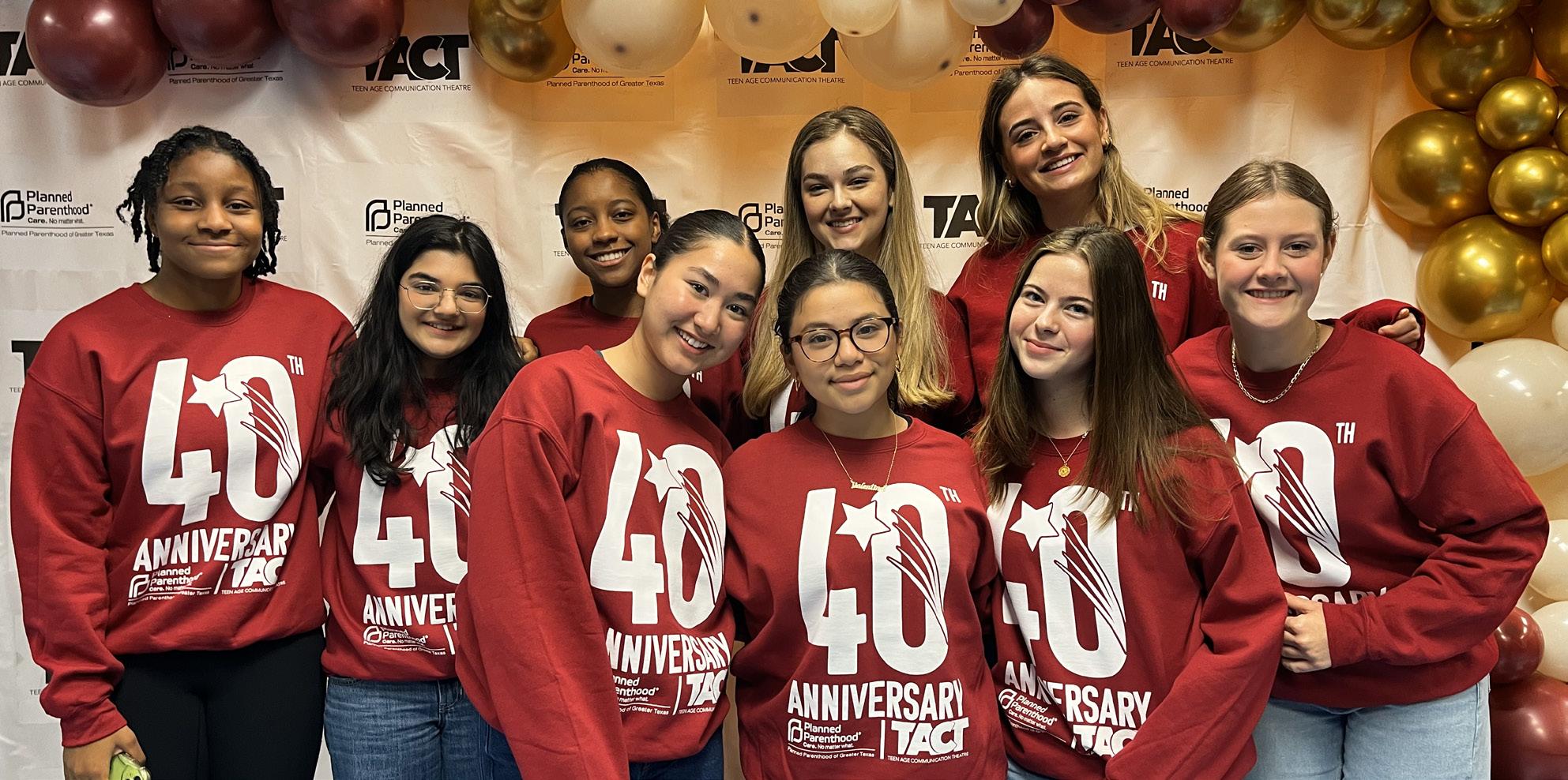
In the state of Texas, the topic of sexual education is mandated within the public school system, but the primary focus of the state-sanctioned program is abstinence, unlike TACT.
Poglitsch says TACT covers a plethora of topics and does it well.
“Coming from Texas, sex [education] is not standardized,” said Poglitsch. “I feel like in the skits that we perform to teens, they do understand and hear our messages about these topics, especially if they don’t hear them a lot in school.”
Being able to combine a new experience is something Johnson says she was excited to do and was a driving factor for her joining.
“I had an opportunity to get out of my comfort zone and act for the first time,” said Johnson. “I also got to combine that with a passion of mine of educating others and spreading awareness on sexual [education].”
TACT members say another benefit of their involvement with the group has been conquering their own doubts and fears to perform in front of strangers.
“My piece of advice would be, if you’ve never acted before, that’s not a good reason to not join TACT,” said Johnson. “I think it’s a really good way of getting out of your [comfort zone], and it’s a really inclusive community.”
TACT can be a place for students to let go, and have a good time, says Rojas.
“A tip I would have is to just try it, smile, and have fun,” said Rojas. “[The TACT team] is always looking for people to brighten the group up so just be yourself, have fun, and there’s no harm in trying.”
Poglitsch says, being on TACT has helped her not only overcome some of these fears but also become a better person.
“It’s made me a smarter and more compassionate person,” said Poglitsch. “It is such a cool and supportive environment and it’s also a great way to give back to your community.”
TACT members say they hope the group continues to inspire students to take action and take joy from educating people in the community.
“I hope they keep the light-heartedness of some of the skits, because I think that’s really important in communicating harder topics,” said Rojas.
Johnson says she wants to see TACT become more involved politically, and in a more hands-on way.
“I would like to see us more involved in certain political stances,” said Johnson. “Even though skits are a really good way of educating different groups of people, I think there’s more we can do to actually do more hands-on work.”
Not only is TACT a vehicle for change, but it allows students to meet people from other schools, and communities that share similar goals to spread awareness, according to Johnson.
“I really hope it further expands to even more parts of Dallas and beyond because I love that it’s brought me closer to a lot of other people outside of Greenhill,” said Poglitsch.
Alia Gaitonde, Sivan Hahn, Kiera Shea
Twenty-five students are practicing several times a week for the Feb. 5 performance of “Annie Jr.,” this year’s Middle School musical.
The production is coming together under the direction of four Fine Arts faculty members: Greg Mihalik, who oversees actors; Will Turbyne, who supervises the set and lighting; Emmanuel Espiritu, who leads musical parts of the play; and Gypsy Ingram, who teaches and directs dance routines.
“Annie Jr.” is a shortened version of the Broadway musical “Annie,” which first opened on April 21, 1977. “Annie” was based on the comic strip “Little Orphan Annie” by James Whitcomb Riley. From then on, the musical and shortened adaptations have been performed in schools and theaters across the country.
For the Greenhill Middle School production, the lead role of Annie is portrayed by sixth grader Kobi Blankson. The character of Daddy Warbucks is played by seventh grader Sammar Agha. Sixth grader Reagan Wakeman plays Miss Hannigan.
A large part of the production is the background and props. Upper and Middle School technical theater teacher Will Turbyne says he has designed and built over 200 shows in his 30 years as a working professional of technical theater, including “Annie Jr.” many times.
Work on “Annie Jr.” is a steppingstone for Middle School students interested in theater.
“It’s a beginning step for tech theater kids to get started on their technical theater journey at Greenhill,” Turbyne said.
Most of the “Annie Jr.” set is video projections for the background, provided by the same company that gives the scripts. They are supplemented by interactive set pieces for actors to use, like desks, furniture, and beds, many of which are reused from previous musicals, according to Turbyne.
“The projections give the big picture and then what the actors are actually working
with,” Turbyne said.
Upper and Middle School dance teacher Gypsy Ingram has taught dance for about 30 years, with 20 years of choreography. Similar to Turbyne, this is not her first time working on “Annie Jr”.
“Ever since I played Annie at the age of 9, I have loved this show and am so excited to bring it to life, in a small way, through my choreography,” Ingram said in an email response to questions.
While teaching dances for this musical is not different from past experiences, according to Ingram, the people are always the variable. Age, experience, and level are all factors that alter the choreography of shows.
“For this musical in particular I am finding moments where individual characters can shine and be showcased, while also working to create a strong ensemble number that wow the audience,” Ingram said in an email.
Ingram says her goal for “Annie Jr.” is to give students a strong, positive introduction to the musical theater world. She describes her focus as encouragement of taking risks, problem solving, working together, and gaining confidence in sometimes uncomfortable areas.
In recent interviews, several students talked about their roles in the Middle School production.
Wakeman says the role of Miss Hannigan, the villainous caretaker of the girls, is the one she wanted from the start.
Wakeman usually practices once or twice a week. She spends her rehearsals singing, dancing, and practicing lines for her first Greenhill musical.
Wakeman says she was drawn to Annie by the “variety of age groups” and the songs, especially “It’s the Hard-Knock Life,” which she auditioned with.
Zayla Yousuf plays the character of Grace, the assistant to Daddy Warbucks and a

mother figure to Annie. Yousuf says she had always wanted this role, even before the show began.
“Grace just kind of came up and I got pretty excited about it,” Yousuf said in an email.
Like Wakeman, Yousuf practices once or twice a week and fills her time rehearsing and learning lines.
Yousuf is an experienced actor after taking part in the Middle School productions of “Seussical Jr.” and “Matilda Jr.” in previous years. She says she works outside of school to improve her acting and singing skills by taking voice lessons and acting in offcampus plays.
Despite previous acting experience, Yousuf describes “Annie Jr.” as a challenge.
“Some of the parts are hard and it takes a lot of thought to bring a character to life and put your all into it,” she said in an email.
When auditioning for “Annie Jr.,” Agha put her name in for three roles: Grace, Miss Hannigan and Daddy Warbucks. She got Daddy Warbucks, the rich businessman who adopts the young orphan, Annie.
Agha, who played an ensemble role in last year’s musical “Matilda Jr.,” says she has never experienced a big role like this.
T“In Annie, instead of being a background role, I really get the spotlight,” said Agha.
While last year’s role required her to do more group singing and dancing, she says she is now given much more independence and solos.
“Even though it’s a lot of work, it’s going to be really nice,” said Agha. “It’s going to feel great.”
Blankson, who plays the lead role of Annie, says she still finds herself dealing with nervousness on stage, even after acting in many plays and musicals. She says she has found new ways to deal with stage fright and other live production problems.
“Usually, I just take big breaths and think that I signed up to be in the musical for a reason and I need put in my best effort,” said Blankson.
In the past, Blankson played ensemble and background roles. This year, with the musical’s main role, she finds herself with an enhanced social and academic life.
“It brings my friends and I together, and I have made a lot of new friends in the process,” said Blankson. “I think I’m a pretty good student, so my grades aren’t really affected by the musical.”
he holidays are the time for rejoicing, and in Rose Hall, Middle School choir students gave the audience their version of a joyous display on Dec. 11.
were among a group of students who came together for a winter concert. They sang a multitude of classic holiday songs, like “I Want a Hippopotamus for Christmas” and “White Winter Hymnal” as well as more modern songs.
“The concert went amazing,” said

seventh grader Lily Moore. “I had a wonderful experience.”
The concert production was a result of extensive preparations, especially because this was the first performance of the year for Upper and Middle School choir director Emmanuel Espiritu.
The Winter Choir Concert is an annual event at Greenhill.
“The concert is a Greenhill tradition, and I am extremely excited to watch it,” said Head of Fine Arts Terry Martin. “This is their first full concert of the year.”
During the performance, the Upper School Singers and Middle School Choir sang two songs together: “All I Want for Christmas Is You,” and a Nigerian carol called “Betelehemu.”
During the Seventh Grade Choir song, “Coldsnap,” there was creative rhythmic sneezing and coughing during the song.
The Sixth Grade Choir was split into girls and boys, but they performed together to sing a composition titled “Firefly.”
The girls separately performed “I Want a Hippopotamus for Christmas” while the boys sang “’ Zat You Santa Claus?” and “You’re a Mean One, Mr. Grinch.”
The 43 sixth and seventh graders in the Middle School choir program this fall started preparing for the concert in late October.
The Seventh Grade Choir is comprised of only five students.
“It isn’t hard finding pieces for only five students because there’s so much good repertoire out there for basically any group of any size,” said Espiritu.
Espiritu, in his first year at Greenhill, formatted the concert mostly by himself. He says he enjoyed doing this because he got to show his creativity.
The concert is a Greenhill tradition, and I am extremely excited to
This is their first full concert of the year.”
“I was a little nervous, because a first concert can always be a little nervewracking,” said Espiritu. “At the same time, my kids are doing an excellent job, and I believe in them. They are right where they need to be.”
Seventh Grade Choir students say they have enjoyed working with Espiritu.
“The environment is fun and nourishing,” said Moore. “Everyone is really nice.”
Espiritu says he is extremely impressed with the abilities of his Seventh Grade Choir members.
“I only have five, but if I had to choose five from the whole seventh grade, these would be the five that I choose,” said Espiritu.
Lyna Kamgang, Chloe Nguyen
7:00 A.M.
I wake up to the song of my alarm “Good Days” by SZA. After, I get up, brush my teeth with my purple toothpaste, wash my face, brush my hair and do my makeup.
8:00 A.M.
I head downstairs and pet my dog Chewie before giving her eye drops and fish oil. I always skip breakfast because I’m not normally hungry in the morning and I hate breakfast foods. Then, I say bye to my mom and leave the house by 8:05 A.M. Every morning, I use my Maps app to find the fastest route to school, even though I know how to get to Greenhill. So, I end up taking a different way to school every morning. On the way, I listen to my summer playlist on Spotify that has 2,815 songs.
8:15 A.M.
After I arrive at school and park by the gym, I find an empty table in the VSI lobby. Before I start working, I stop by Catalyst Coffee and get my daily vanilla chai. Then, I pull out my laptop to finish my college application to Syracuse University that I was working on the night before. When I’m done editing my supplemental essays, I make the payment and submit it on the Common App website.

6:30 A.M.

8:30 A.M.
I have calculus class from 8:30-9:50 a.m. Today, we continued learning about limits with [Steve] Warner and then were dismissed 10 minutes early.
9:40 A.M.
I settle down in my usual spot on the Social Staircase for my two back-to-back free periods. Once I get my study playlist going on my pink AirPod Maxes, I work on my Capstone Project for my Introduction to Psychology GOA class. My research explores the benefits of running on mental health.
10:50 A.M.
I head to tutoring with a woman who specializes in dysgraphia. She helps edit my college essays and my applications.
11:50 A.M.
Working on college [apps] built up an appetite. I take a study-break and go to the Buzz to buy a sugar cookie and sun chips. When I return to the VSI, I start my AP Environmental Science homework, which notoriously takes me a long time. In between taking notes, I hang out with my friends that share the same break period with me. Jane, Juan, Gracie, Nathan, Connor, Austin and I like to try different snacks and make reviews.
I meet up with Chloe and we use our senior privileges to eat off campus. Our go-to is the Bay34th Street Pizzeria on Belt Line. We always order a chicken alfredo pasta, a cheese pizza, a Caesar salad, a Coke and a Dr. Pepper. 1:15 P.M.
4:00 P.M.
After AP Statistics, I meet Jane at the gym and we change into athletic clothes for our afterschool workout. We run a hybrid mile and a half where one of us runs a lap while the other does a core exercise, and then we switch. Our core workout includes a plank, sit-ups, bicycle kicks and squats.

I drive home, change and shower to refresh. To take a mental break, I watch a little TikTok before recording a vlog cleaning my room for my friends.
6:00 P.M.

My dad and I meet in his office for our weekly college meeting. We look at my Excel spreadsheet of all the colleges I’m applying to and see what I need to do. I set up and log into some new portals for the universities I’ve already submitted to. After, we go through more of my finished essay drafts for my remaining colleges.
I meet Chloe at the University Park Public Library for our daily study session together and keep working on my homework and finishing my college applications. Once the library closes, we switch locations to Starbucks on Park Lane. I always get a vanilla bean Frappuccino, no matter how cold it is outside.
9:15 P.M.
I come home to eat dinner with my mom and give each other our day recaps. Tonight, she cooked shrimp stir-fry. After we finish eating, I go to my room and take a brain break watching a True Crime episode on Netflix before doing more homework. I have a routine system of doing one class’s homework, taking a 15-minute break on my phone, doing another class’s homework, and so on.
I wake up, brush my teeth and take my shower. Then, I pack my bag for my Green Day. On these days, I have AP BC Calculus, Band, AP Euro and Detective Fiction.

7:40 A.M.
I get to school early because my sister is in Middle School. I eat breakfast at Greenhill every morning and that’s usually potatoes and the vegetarian egg taco. Me and my friend Noah hang out in the morning, and we do homework and just chill.
8:30 A.M.
Then I have my math class, and we’re currently preparing for our test. I always sit at a table with Jack, Garrett and Eitan at the table closest to [Melissa] Battis’ desk. The class is difficult, but I enjoy learning new things.
11:20 A.M.
Between Band and AP European History we have a 20-minute break. At this point, I do work, usually on my college applications. Today, I finished up one of my Duke supplements.

11:50 A.M.
In AP Euro, I am also preparing for a test later this week. We are learning how to write DBQs (Document-Based Questions). The class is fun because I like to see how history played out and how that still affects us today.
1:15 P.M.
Next, I go to lunch. I always get either a panini or a salad. In our free time after lunch, I work on some more college essays. Right now, along with Duke I’m working on UPenn, [Washington University in] St. Louis and things like that.
2:35 P.M.
My last class of the day is Detective Fiction with [Alvaro] Cantu, and we always watch different movies and look at novels in class. It’s a fun way to round out the day.

I FaceTime Juan and we play Fortnite before I go to sleep.

5:00 P.M.
Because I live in Coppell, at this time I am just getting home. After I’m back at my house, I take an hour-long nap.
6:00 P.M.
I wake up and try to work on some more [college application supplemental essays]. After I’m done, I eat dinner.
8:00 P.M.
Now, I start all of my homework, this week it is mostly studying for tests. I also do some work on debate.
10:00 P.M.
I go to bed.
If there’s a meeting to lead, a team to captain, or a project to tackle, you’ll often find senior Sophie Fiedelman at the helm.
Fiedelman’s impact is seen in many places throughout the Greenhill community
students,” said JAG sponsor and Director of College Counseling Jenny Fisher. “She made a point to introduce herself to different people, to reach out to people that she didn’t know and so from the first meeting, you could tell that she was going to be a really wonderful member of the group.”

for Greenhill School.
“I’ve been at Greenhill since pre-K,” said Fiedelman. “It’s where I’ve grown into myself. Every club I’ve joined, every project I’ve led has been a way to give back to the community that helped shape me.”
Harkey says she is a devoted leader in the community.
“There was a time in 2023 when the ice storm came through and I heard that she came to Greenhill and helped herd the peacocks into a warm space. That’s incredible,” said Harkey. “She’s a giver and a hard worker who self-advocates for herself and also is always working for others.”
Fiedelman joined the Jewish Affinity Group in her sophomore year, when it was founded.
“I remember her from the very first JAG meeting of last year because of the way that she interacted with so many different
A member of the Honor Council since the end of her sophomore year, Fiedelman now serves as co-chair.
Fiedelman says she always aims to give fair rulings.
“I try not to let my biases impact ruling on the case and my decision,” said Fiedelman. “Sometimes that means, like, taking a step back, maybe not speaking up in meetings as much if I feel there’s some connection that might interfere with my thinking, or I don’t want to make the student uncomfortable.”
As co-chair, she infuses these values into the culture of the Honor Council, says Dean of Students George Heinrichs.
“I think she is a remarkably reflective individual who cares deeply about the community, who is deeply aware of the school’s values and really wants the best for everyone,” said Heinrichs. “She’s constantly thinking like, kind of in strategic terms: How do the policies impact students? How can the school better communicate with students’ rules? How can teachers be better set up for success?”


Although she has participated in volleyball, soccer, and cross country, Fiedelman has been a leader and key player on the varsity softball team since freshman year and became captain her junior year. This season she co-captains alongside seniors Sami Aidala and Ella Ou-Yang.
Although she currently plays shortstop, she has rotated through four different positions during her softball career.
She is a selfless leader, according to Head Softball Coach Monica Stephens.
I think she is a remarkably reflective individual who cares deeply about the community, who is deeply aware of the school’s values and really wants the best for everyone.”
“She just asks how can I help the team? What’s best for the team? An exceptional leader, doing all the things she’s supposed to be doing,” said Stephens. “Even if she has a bad day, you can’t tell. She’s super consistent in everything that she does and extremely kind to all of her teammates, so in turn, all of her teammates highly respect her.”
Fiedelman says her approach to leading the team is to maintain a positive atmosphere, especially with many new members joining.
“We have a young team, a lot of underclassmen, so we really focus on helping them adjust being on a varsity sport and also helping them when they’re down or disappointed about how they play,” said Fiedelman. “You want to be a pretty encouraging and a pretty optimistic person in sports, because negative self-talk can really impact how people play, so I try to combat that.”
Fiedelman’s co-captain Aidala says the team greatly appreciates her impact.
“Sophie makes everything more fun, and she brings great energy and enthusiasm,” said Aidala. “Even something like running flagpoles is fun with Sophie around.”
Despite her many commitments, Stephens says Fiedelman handles her responsibilities well.
“She is spread thin in all of the activities that she does, but I believe if you asked every faculty member that oversees whatever activity she’s in [they’d say] you wouldn’t know it if somebody didn’t tell you, or she didn’t tell you,” said Stephens. “Whatever she is in, she’s extremely present and giving it her all.”
Fisher echoes this sentiment.
“Balancing everything that she has to do is something that lots of students have to
do here at Greenhill, but I think she does a really great job of it,” said Fisher. “She is very deliberate in planning her time, because she wants to make sure that she honors all of her commitments, and she does honor all of her commitments beautifully.”
Fiedelman began working on the Cavalcade staff as a sophomore and quickly rose up the ranks after winning Rookie of the Year, an award given to a new student by upperclassmen.
Fiedelman was a managing editor her junior year and now serves as co-editor-inchief alongside Daniela Hallack.
“It was important to me to have other people to work with and get more insight and really just help me manage leadership,” said Fiedelman.
The yearbook staff began the semester in a new space with fewer computers than needed to perform the required work.
“We started the yearbook a monthand-a-half late, without enough computers, but Sophie has worked really hard to get us back on deadline and back on schedule,” said senior Ashley Weinstein, a member of the yearbook staff.
Fiedelman worked with Heinrichs and Head of Upper School Trevor Worcester to find more computers.
“She approached the challenge with a lot of grace,” said Upper School history teacher Ayasha Hensen, who is also faculty sponsor of the yearbook. “She was very understanding but also did an excellent job of advocating for her team and staff so they can continue to produce a quality yearbook.”
Fiedelman has learned to manage and lead others during her tenure editing the yearbook.
“I’m really good about working with all different types of people,” Fiedelman said. “That’s really something I’ve developed in yearbook with so many different personalities in that class, and that’s really helped me in other areas of leadership, really just being open minded, being willing to work with other people.”
Like other Upper School faculty members and staff, Hensen has seen those qualities in action in Fiedelman’s work.
“She is demonstrating what leadership should look like and has shown that leadership is not always directing people but also leading by example,” Hensen said.
Aria Kutty
alternate teaching subjects depending on what the school needed from her.
really helping you understand concepts.”
go out and do tech support for Ultimate.”
y the time Upper School math teacher
Melissa Battis was in fourth grade, she was convinced that she was going to be a teacher.
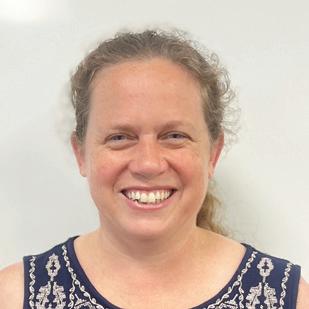
“I had no idea what I was going to teach, but I just wanted to do it,” Battis said. “I had an amazing teacher in fourth grade, and I remember that very clearly being the moment that I knew I wanted to go into teaching.”
In many ways, a career in teaching was destined for Battis.
Her mother was a Classics teacher, her brother taught history, computer science and math, and her sister is also an elementary school math teacher. Both of her siblings even married teachers, solidifying a career in education as something of a family tradition.
“Honestly, teaching is the family job, the family business,” Battis said.
However, when Battis graduated from high school, she had no plans for higher education.
“I did not want to go to college,” Battis said. “But I knew I wanted to be a teacher, and you can’t be a teacher without college.”
Ultimately, Battis decided to attend Carleton College in Minnesota.
When she arrived, she was uncertain about what she wanted to study. After excelling in AP Latin during high school, she thought her days of studying languages were behind her. However, a challenging placement test placed her right back in Latin classes – specifically, level three – when she started college.
“When I got to the first reading in [level three Latin], it was like I was reading English,” Battis said. “So, I fought for them to let me skip the class and take a higher-level one.”
As Battis thrived in her Latin classes, she was also taking advanced math classes. She considered double majoring in math and Latin, but ultimately chose the latter due to scheduling conflicts.
Despite this, it was her passion for both subjects that led her to her first teaching job at Saint Stephen’s Episcopal School in Florida, as it was the only school where she could teach both math and Latin.
Because of her broad skillset, she would
“The year I was looking for a job happened to be a year I was teaching math,” Battis said. “Honestly, I think if I had looked the year before, I would have been a Latin teacher.”
Although she interviewed for both Latin and math positions at Greenhill, she was ultimately hired as a math teacher. So, during her first few years at Greenhill, she pursued a Master of Arts and Teaching in Mathematics from the University of Texas at Dallas.
“I am someone who always wants to keep finding new ways to do things,” Battis said. “I want to stay up to date on research and pedagogy.”
This mindset is reflected in her classroom, as she is often coming up with new ways to present material to her students. At first, Battis taught the way she was taught, in conversational lectures.
“I think every teacher starts teaching the way they learned,” Battis said. “Most of us learned sitting in rows in that lecturebased style. I have always been an ‘engage with you’ type of teacher, so I tried to make it be a conversation in a classroom.”
Her desire to find new teaching methods led her to read the book “Building Teaching Classrooms in Mathematics” a few summers ago.
The book provides practical methods such as random groupings and visible workspaces to shift the focus in a classroom from rote learning to collaborative problemsolving. As soon as she started reading it, Battis says she was hooked.
“Everything about that book just made sense,” Battis said. “So, two years ago, I really threw myself into this new system.”
Unlike traditional math classes, Battis now often avoids lecture-based lessons. Instead, she structures her classes mainly around group work and collaborative problem-solving on whiteboards.
Battis says she sees many benefits in this new method of teaching. Students in her class are constantly changing who they are talking to, leading to ideas and strategies being shared among peers. In addition, students are constantly moving and walking around – ensuring that they stay engaged during a lesson.
“I really like how it builds a collaborative atmosphere in the class,” said senior Jenna Travers, who took Battis’ Honors Precalculus class. “She is good at explaining things and
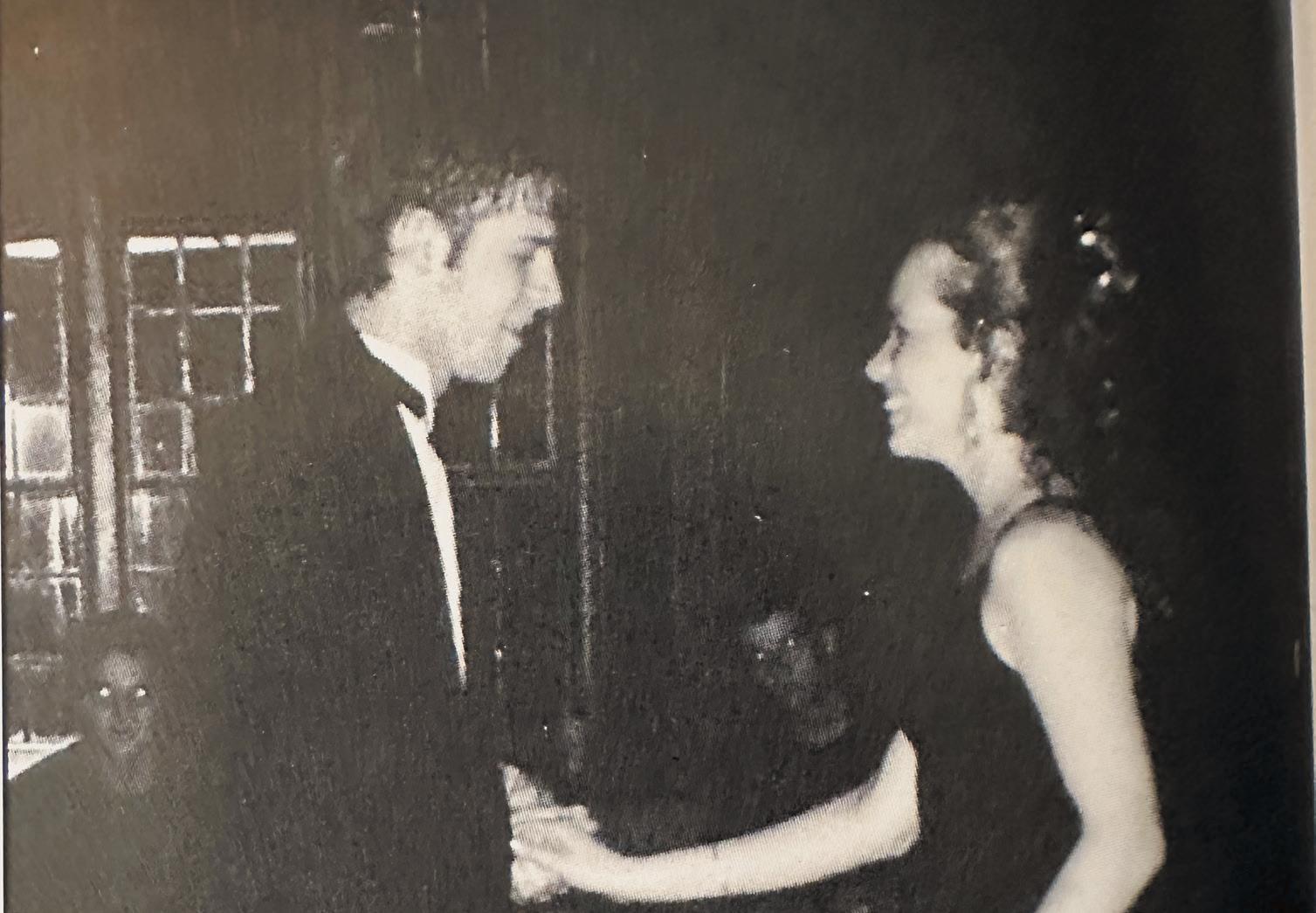
Along with teaching math, Battis also served as Greenhill’s Educational Technologist for multiple years. Despite never having taken a coding class, her curiosity and determination drove her to excel in the role.
“Before I could read, we were taking the department Mac home over the summer and I would fiddle with programs,” Battis said. “I have always been comfortable with tech. I am someone who is always like, ‘let me see if I can figure it out. If it breaks, it breaks, I’ll figure out how to fix it.’”
As the Educational Technologist, Battis helped to integrate technology into the classroom and support other teachers with their technological needs.
“I try to be that calm presence to say, ‘let’s see if we can figure out what is going on,’” Battis said. “Helping people not be scared of technology is something I enjoy.”
Battis also serves as the faculty advisor for the Math Lab, a student-led mathematics tutoring center. In this role, she collaborates with senior Sherry Zhang, who is the student Math Lab leader, to organize group review sessions, schedule tutoring times and manage the lab’s daily operations.
“Having the ability to have a space to not only help others but also get help in Math Lab is so valuable,” Zhang said. “She is always available when I need her.”
One of Battis’ passions outside the classroom is her active involvement in working with USA Ultimate – a hobby she embraced during college.
“Every freshman floor had an intramural frisbee team,” Battis said. “It was sort of like a bonding experience.”
During college, Battis joined multiple intramural teams, and at one point was playing around seven to 10 games per week.
After playing intermittently since college, Battis began volunteering with USA Ultimate in Dallas in 2013. She later became president of the Dallas Ultimate Association and even became a general manager of a semi-professional team. Now, she serves as coordinator for the men’s South-Central Region.
“My job moved from organizing the paper and doing data entry of all the stats to an electronic app,” Battis said. “So literally, I
Ultimate is not the only way Battis stays active. In college, Battis was required to get a P.E. credit, which led her to a ballroom dancing class.
Battis quickly excelled in this pursuit, and her talent and dedication led to her being recruited to teach classes for three years.
“We planned the curriculum and everything,” Battis said. “It was fun. We would take groups up to the Twin Cities to different dance clubs and competitions.”
In addition to frisbee and dance, Battis is an avid artist.
“I’ve always been fascinated by geometric art,” Battis said. “Growing up, my family would travel to Greece or Turkey for spring break. There, I was fascinated by the beautiful art and mosques in Istanbul and always wanted to figure out how to do it.”
This past January, Battis participated in a 30-patterns-in-30-days challenge, where she created a piece of geometric art every day.
“It has been fun to get my hands back into art,” Battis said. “The group I was doing [the challenge] with was really positive. And, [my students] would always come back after lunch and ask to see my artwork.”
Battis describes this as a testament to the relationships she builds with her students.
“I love teaching high school because it is more than just teaching the academics,” Battis said. “It is helping kids find out who they are as adults and helping to create thoughtful, responsible adults that go out and continue fighting for the good of the world.”
Despite her many talents and hobbies, Battis says she still finds ways to ground herself within her community.
When COVID-19 hit and travel came to a halt, Battis found herself with more time and a renewed focus on her volunteer work. With Operation Kindness urging for a shelter clear-out, she seized the opportunity to make a difference through fostering cats.
“I specialize in cats that other people don’t want,” Battis said. “For example, I foster ringworm cats. I have one room set aside for ringworm cats. Everything is in plastic. I also specialize in the badly behaved ones.” By her own count, Battis has fostered well over 100 cats.
This dedication has guided Battis down many paths. However, in all the activities she pursues, she says one thing remains certain.
“I just have this thirst for knowledge,” Battis said. “I always need to be learning something.”

Christan Park
In 2017, Associate Head of School for Mission, Community and Culture Tom Perryman ’81 began the Upper School Literature of Human Rights in the U.S. class after earning his master’s in liberal studies with a focus on human rights from Southern Methodist University.
“I had become really fascinated with the study of human rights and felt like Greenhill students would really be interested in diving into or really wrestling with hard questions,” said Perryman.
In this year’s semester-long class, Perryman challenged students to investigate specific Dallas cases of judicial errors that led to wrongful convictions. After the class was split into three groups to research the cases of Quintin Lee Alonzo, Joyce Ann Brown and Randall Dale Adams, each group was assigned to make an action plan to accompany their findings.
Perryman provided each group with police reports from the original crime, along with fingerprints, injuries inflicted and other significant information from public records.
“I wanted the kids to work in groups to dig and figure out what happened and where the case went wrong,” said Perryman. “I want them to be aware of how hard it is to create justice and how easy it is for things to go off the rails.”
During the presentations, each group shared the consequences of wrongful
convictions and examined how bias, flawed evidence and systemic failings contribute to these injustices.
“We were encouraged to ask tough questions,” said senior Saida Bidiwala. “It wasn’t just about the past. It was about what changes need to happen to prevent these tragedies in the future.”
As the project progressed, Perryman took the students on a field trip where they heard from Richard Miles, a Dallas exoneree who spent 15 years in prison after a wrongful conviction. Miles now leads Miles of Freedom, a nonprofit organization advocating for systemic reform and supporting exonerees through endeavors such as the Reentry Assistance Program to help them transition back to society after incarceration.
“When this guy tells his story, it’s just amazing,” said Perryman. “He is an extraordinary man, and he’s just raw and honest.”
In previous years, the students met Miles after their case study. This time, Perryman says he hoped that by introducing students to Miles in the middle of their project it would inspire and push them to do their best work.
“Meeting Mr. Miles gave me a completely different perspective. It showed me the human side of these injustices and

SPEAKER VISIT: The Literature of Human Rights class took a field trip to meet Richard Miles, left front, an exoneree who was wrongfully incarcerated for 15 years.
made me realize how much work needs to be done to fix the system,” said senior Shreya Chhaya.
For many students, the project sparked a deeper interest in justice and advocacy as well.
“I think that this experience has really informed me a lot about activism and advocacy that I do in politics and other campaigning,” said senior Neha Bachu. Perryman says he hopes the project
inspires students to use their knowledge to create meaningful change.
“I want them to ask the question, ‘if they did do something, what happens? What should be the goal of our legal system? Should it be punishment? Should it be rehabilitation?’” said Perryman. “I don’t have answers for them. I just want them to wrestle with these questions and expose them to hard questions to let them figure out what they believe.”
Below is a case study by students in the Upper School Literature of Human Rights class as part of their action plan project.
Gabi Appel, Saida Bidiwala, Hazel Goes-Young, Soyam Mohammed, Tal Rogozinski, Kaavya Sampath, Hank Utay
On Nov. 28, 1976, at around 12:30 a.m., Dallas police officer Robert Wood was shot and killed during a routine traffic stop.
Sixteen-year-old David Harris gave a statement to the police stating that it was Randall Dale Adams who fired the gun and killed Wood.
One of the many inconsistencies with this allegation was that Adams was found in an entirely different area than the site of the murder. Despite that fact, Adams was quickly arrested and brought in for interrogation. He told the police he was hitchhiking with Harris earlier that day but had not seen him since.
Despite that, Adams was charged with murder.
In the ensuing trial, three individuals testified against Adams. However, one of these individuals identified Adams as the gunman only after the police offered to drop her daughter’s ensuing robbery charges.
James Grigson, a psychiatrist, testified that Adams would be a future danger to society. This claim was later disproven by the American Psychiatric Association.
We learned that Grigson became known as “Dr. Death” for his role in more than 100 cases in which his testimony contributed to death penalty convictions.
Based on questionable testimony and very little physical evidence, the jury found Adams guilty of the murder of Robert Wood and sentenced him to death in an unusually hasty 22 minutes.
In 1985, filmmaker Errol Morris began work on a film about Grigson. During his research, Morris discovered Adams’ story and decided instead to make the documentary about the man convicted of murdering Robert Wood.
Through this film, “The Thin Blue Line,” Morris uncovered several instances of prosecutorial misconduct and exculpatory evidence present within Adams’ case.
These revelations shed new light on the case and eventually contributed to a 1989 ruling by the Texas Court of Criminal Appeals that overturned Adams’s conviction on the grounds of prosecutorial misconduct and perjured testimony. The court granted Adams a new trial.
Prosecutors declined to retry the case, restoring Adams’ freedom, but Adams never received a pardon and thus was denied financial compensation for his wrongful conviction and the 12 years he spent in prison as an innocent man.
The prosecution’s star witness against Adams, David Harris, was eventually revealed to be the killer of Officer Wood. Harris was executed by the state of Texas in 2004 for another murder – a murder that could have been prevented had a more thorough investigation of Wood’s murder been conducted, and if Harris had been rightfully convicted of Wood’s murder instead of Adams.
The wrongful conviction of Randall Dale Adams is not just an isolated lesson from history. Wrongful incarcerations are still a glaring issue in the criminal justice system, we learned.
Today, for example, a man named Robert Roberson is sitting on death row in a Texas prison, convicted of murder based on what justice advocates contend was flawed evidence and outdated science.
In 2002, Roberson’s two-year-old daughter Nikki was sick with a high fever and fell from her bed, sustaining critical injuries. She died soon after.
Police accused Roberson of causing his child’s injuries and charged him with murder.
Ignorant of the fact that Roberson has autism, prosecutors concluded his less emotional reaction to his daughter’s critical condition was a sign of guilt and accused Roberson of child abuse in his murder trial.
Based in part on this information, the jury convicted Roberson of murdering his own child through what is known as Shaken Baby Syndrome.
In 2003, Roberson was sentenced to death. His execution date was set for this fall, on Oct. 17, but advocates succeeded in getting the execution delayed. The advocates argued that the allegations of child abuse are without basis.
In addition, the justifications behind convicting someone of Shaken Baby Syndrome have since been called into question by numerous studies and scientific research, and 32 people in 18 different states have been exonerated as a result.
In fact, Roberson’s legal team has argued that Nikki’s death resulted from natural causes, including chronic illness and severe pneumonia. The lead detective in Roberson’s case, who testified on behalf of the prosecution, says he now believes he contributed to a wrongful conviction.
After failed attempts for clemency but successful community advocacy from the Autism Project, the Innocence Project and from other sources, Texas lawmakers subpoenaed Roberson, delaying his execution temporarily.
Cases like those of Randall Adams and Robert Roberson highlight the importance
of discussions about wrongful incarceration in the United States. Our nation’s history has shown that eyewitness misidentification, coerced confessions and prosecutorial misconduct all contribute to the downfall of the system’s structural integrity.
Organizations like Miles of Freedom and Conviction Integrity Units in the U.S., among many other efforts to reduce wrongful incarcerations, have been effective, but exoneration is not the endpoint.
There is an immensely taxing emotional, social and economic toll from being in prison, all of which make reintegration into society extremely difficult for exonerees.
After studying these cases, we decided to bring issues of wrongful incarceration to light through this essay and a screening of “The Thin Blue Line” after the holiday break.
Now, we place the onus on each of you. Despite the temporary stay of Roberson’s execution, the Texas Supreme Court recently ruled that lawmakers can no longer delay executions and that Roberson’s execution will proceed.
We encourage you to conduct research into cases like that of Robert Roberson and advocate against what we view as wrongful convictions, to save innocent people from irreparable harm or even state-sanctioned execution.
You can start by raising funds for the Innocence Project in Texas (which provides free counsel to people who are trying to overturn questionable convictions), volunteer for rehabilitation programs in the DFW area, vote for justice-minded Texas government officials or draft letters to the Texas Board of Pardons and Paroles.
No matter the plan of action, justice demands vigilance and action. Each of us has an obligation to ensure that fairness survives, to defend the innocent and hold the system accountable.
We hope that you choose to uphold this obligation.
Senior Ana Blankson has been immersed in the world of art from a young age.
“My mom loves art, and my aunt was an artist,” Blankson said. “I started out by just copying them.”
It wasn’t until high school that Blankson truly began to develop her own artistic identity. Her freshman year, she enrolled in Drawing I and Painting I, where she says she found the freedom to explore and experiment with her creativity.
“I didn’t really stick to one [style],” Blankson said. “I think it’s wrong [to], honestly. However, I felt in any given moment and when I got an idea, I would decide to try it out.”
In the summer of 2023, Blankson’s grandfather was diagnosed with dementia.
Doctors recommended art as a way to help with his condition, and this led to twohour weekly art classes that Blankson attended with him.
“It was a way for us to spend time together, and then it was also for him, so he didn’t think he was just there because his doctors and my parents wanted him there,” she explained.
ways, I think. But you can see that there’s two people there. The blue one is much more dominant in the image.”
The glasses Blankson is referring to are Anaglyph 3D glasses. These glasses have red and blue lenses. The red lens makes the red pen turn white, disappearing into the page while the blue ink is all that visible. And the opposite is true for the blue lens.
“You can put on the glasses, and close one eye, and you’ll see through the red lens, and it will be her with the braids, and it is what she thinks society wants to see,” said Blankson. “Then if you close your other eye, and you look through the blue, you see her with her natural hair, which is how she
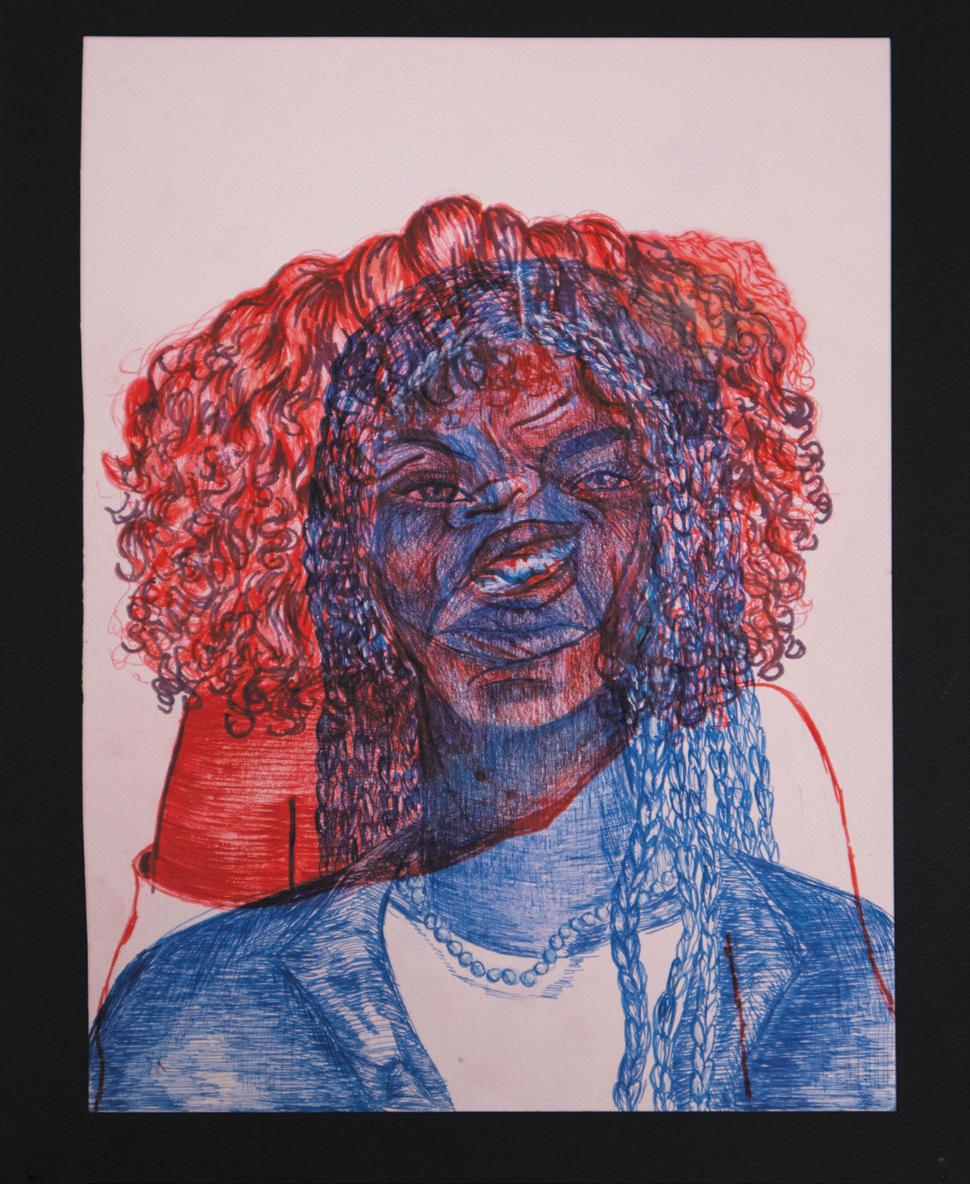
Over the course of these classes, Blankson noticed significant progress in both her grandfather’s condition and her own artistic journey.
“The teachers were really good at teaching you about technique,” Blankson said. “I learned a lot more about colored pencils and how to do that using charcoal and then painting as well.”
Currently, Blankson is enrolled in Greenhill’s Advanced Placement 2D-Art and Design. Students are required to submit a 15-piece portfolio, along with written components and five separate pieces that are considered “Selected Works.”

Blankson began her portfolio in her junior year, when she made a piece called “Layers of Assimilation” to present at the Independent Schools Association of the Southwest Arts Festival.
In this drawing Blankson shows a layered image: a Black woman drawn in blue with her hair in box braids, and then the same woman drawn more faintly on top in red, this time with her` natural hair showing.
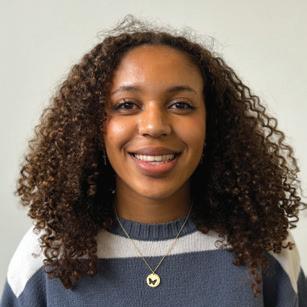
“You can look at the piece in two different ways,” said Blankson. “You can look at it like straight on without the glasses, and it just kind of looks like a mess in some
represent feelings she was never able to express.
“I never really spoke up about [the racism] because I didn’t like to make adults mad,” said Blankson.
Although Blankson dedicates much of her time to art, her own experiences have inspired a passion for community and selfesteem-building among teens.
In her art, Blankson depicts both the expressive freedom
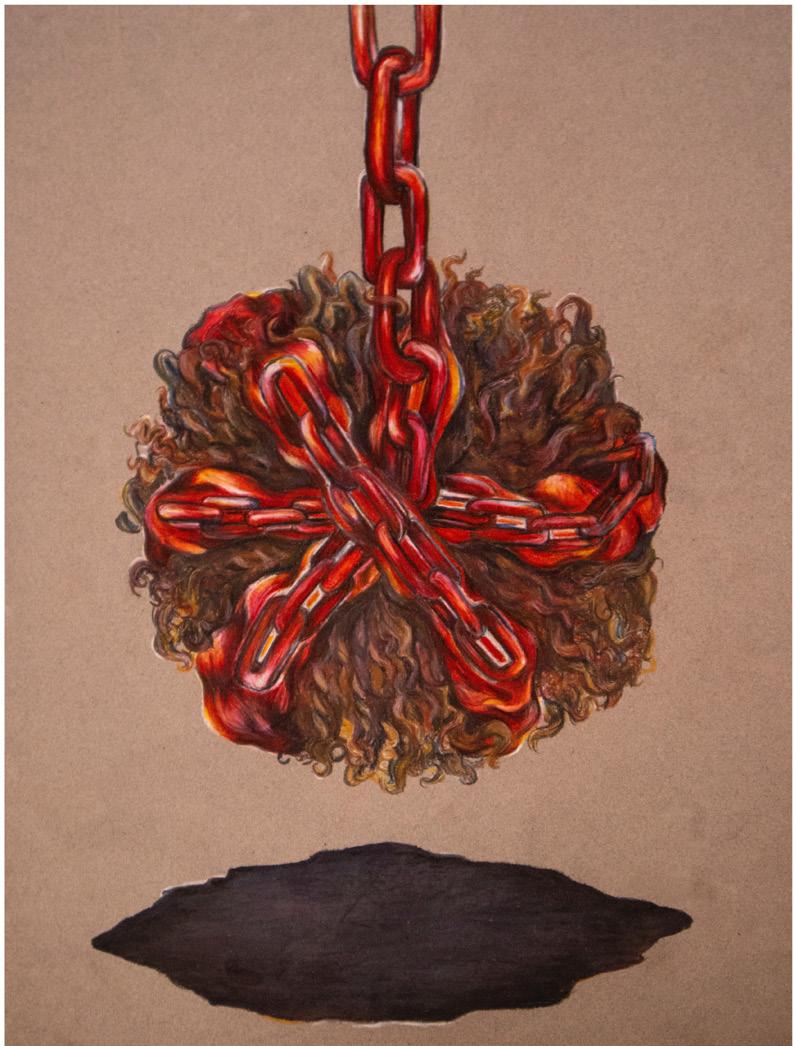

personally feels, and it’s
“Layers of Assimilation” served as inspiration for two main themes in
“The portfolio is very much focused on my hair,” said Blankson. “I have a theme of red and blue throughout my pieces. Red is society’s expectations, their wants, their needs, and what they want to do, and blue is like my inner thoughts and feelings and how I perceive myself. It’s me, in my most natural state.”
Upper School 2D art teacher Kendall Davis says that Blankson is a unique student.
“She’s a special blend, because usually you have a student that’s really skilled in eyehand coordination, or you a person that’s really skilled in coming up with great ideas,” said Davis. “But she’s a marriage of both.”
Many of Blankson’s ideas are inspired by her own lived experience.
“My portfolio is a reflection on my younger self and growing up specifically in Virginia, San Antonio and Dallas,” said Blankson. “It’s a lot about how I faced a lot of racism and ignorance.”
She says that many of her pieces
“BGU came from a need that I wish I had someone to look up to or could have talked to someone that was older than me, and I feel like it would have helped with a lot of the experiences I faced that weren’t as positive, that I did not share with my parents,” said Blankson.
Blankson says she wants the group to serve as a safe space for Black girls in the Greenhill community to build friendships with one another and share their stories.
“[It’s] a space where [Black girls] feel comfortable and have role models and people that can look up to, that deal with some of the similar comments that they receive, and really just [have] friends and people that aren’t their parents, that they can ask the hard questions,” said Blankson.

Junior Kendall Johnson, a member of Black Girl Unity, says that Blankson’s leadership has been critical in creating a cohesive and self-reflective community.

the frustration women experience with their hair. Blankson says she hopes to help others with the challenges of textured hair like her own.
“I’m working on developing an app called Curlwize right now, which is supposed to help empower younger girls who specifically don’t really know how to do their hair and want to understand it more,” said Blankson.
Blankson also says she hopes to teach parents whose hair texture may differ from their children, how to nurture and style curly hair.
“I wanted to make an app that helps parents who don’t understand their kid’s hair, because my mom didn’t really know how to help,” said Blankson.
Just as she strives to develop confidence among younger girls with her beauty app, Blankson says she also recognizes the need for impactful relationships between Black teens. Blankson, along with senior Lily Alston, cofounded Black Girl Unity, a Greenhill group dedicated to building stronger community among African American girls in the Upper School and developing mentor relationships with Middle School girls.
“Ana’s done a really good job of not just uniting us as a group but making us think deeper about our experiences and making us think about how we can promote connectivity between not only Black girls in the Upper School, but also through the Middle School,” said Johnson. In her portraits, Blankson says she aims to celebrate the diverse colors and textures found in the human form. In her app development and the Black Girl Unity group, Blankson says she hopes to build communities where young women can find connection and shared wisdom as they navigate their unique identities and struggles.
“[BGU] is really healing my inner child, having this space,” said Blankson.



After months of preparation, the fall musical, “Mamma Mia!”, played to sellout audiences on Nov. 21-22. This year, Greenhill Theatre introduced a double cast and a preview performance for Upper School students and faculty prior to opening night.
“Mamma Mia!” follows the main character Sophie and her mother Donna. The play is set on a Greek isle at a hotel run by Donna.
Throughout the play, everyone is preparing for Sophie’s upcoming wedding. Sophie doesn’t know who her dad is, so she decides to invite three possible paternal candidates in hopes of finding her true father and having him walk her down the aisle. Ultimately, she accepts all three as her father and doesn’t get married, but her mother, Donna, remarries instead with the support of her friends, Tanya and Rosie.
Sophomore Ollie Melgarejo said the show’s sense of humor resonated with the Upper School students.
“It’s a good musical,” said Melgarejo. “It’s funny. There’s a lot of jokes in there.”
Unlike fall musicals in the past, “Mamma Mia!” featured a double cast, where each of the lead roles was played by two people. The first night featured sophomore Elise Nelson as Sophie, senior Ellery Sherwood as Donna, junior Samantha Hermann as Tanya and junior Ruby Garza as Rosie. The second night featured sophomore Lydia Kerridge as Sophie, senior Lila Levy as Donna, senior Cassie Rosa as Tanya and senior Shreya Chhaya as Rosie.
“What’s great about those students and those actors is that they really communicated

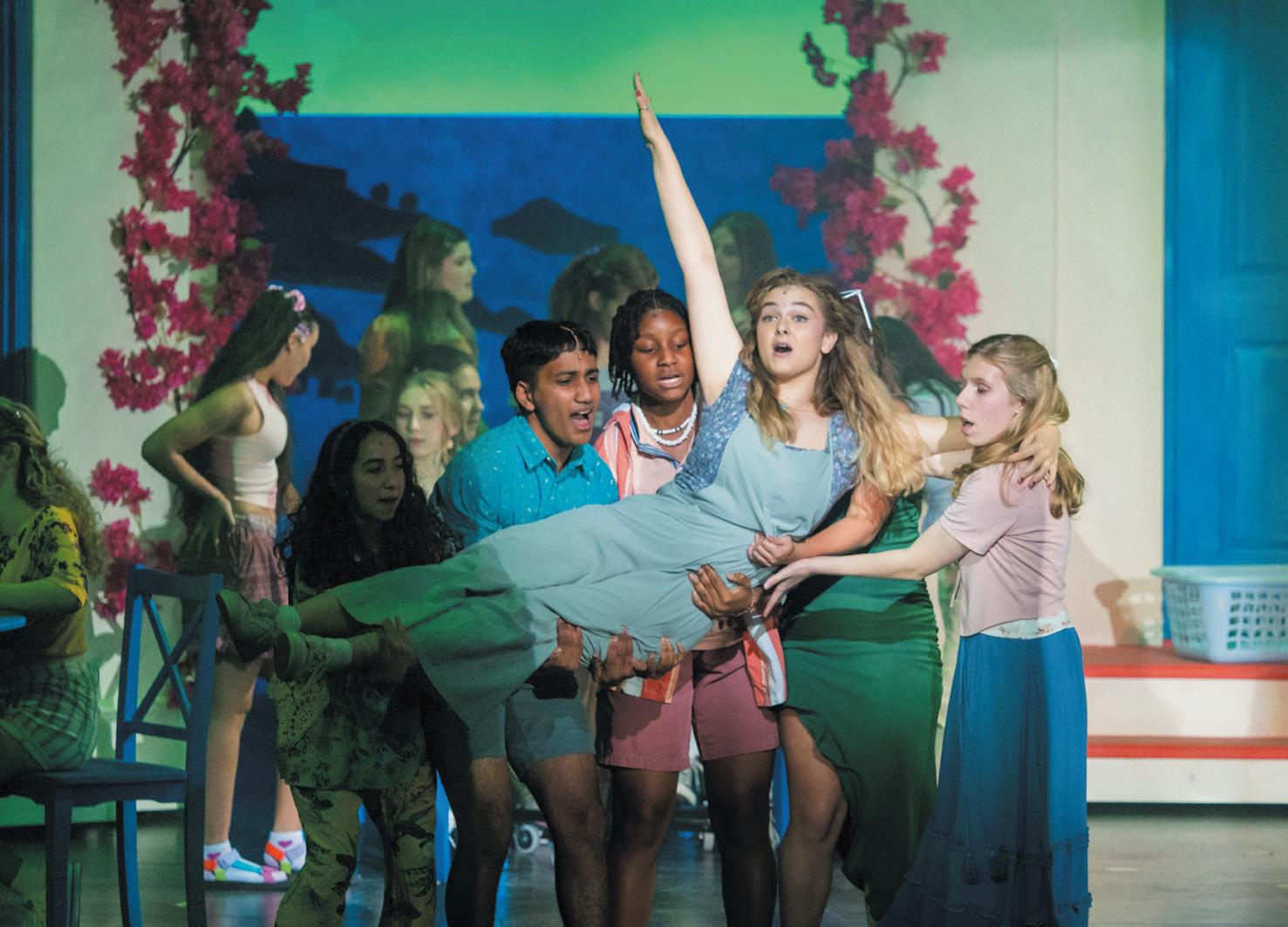
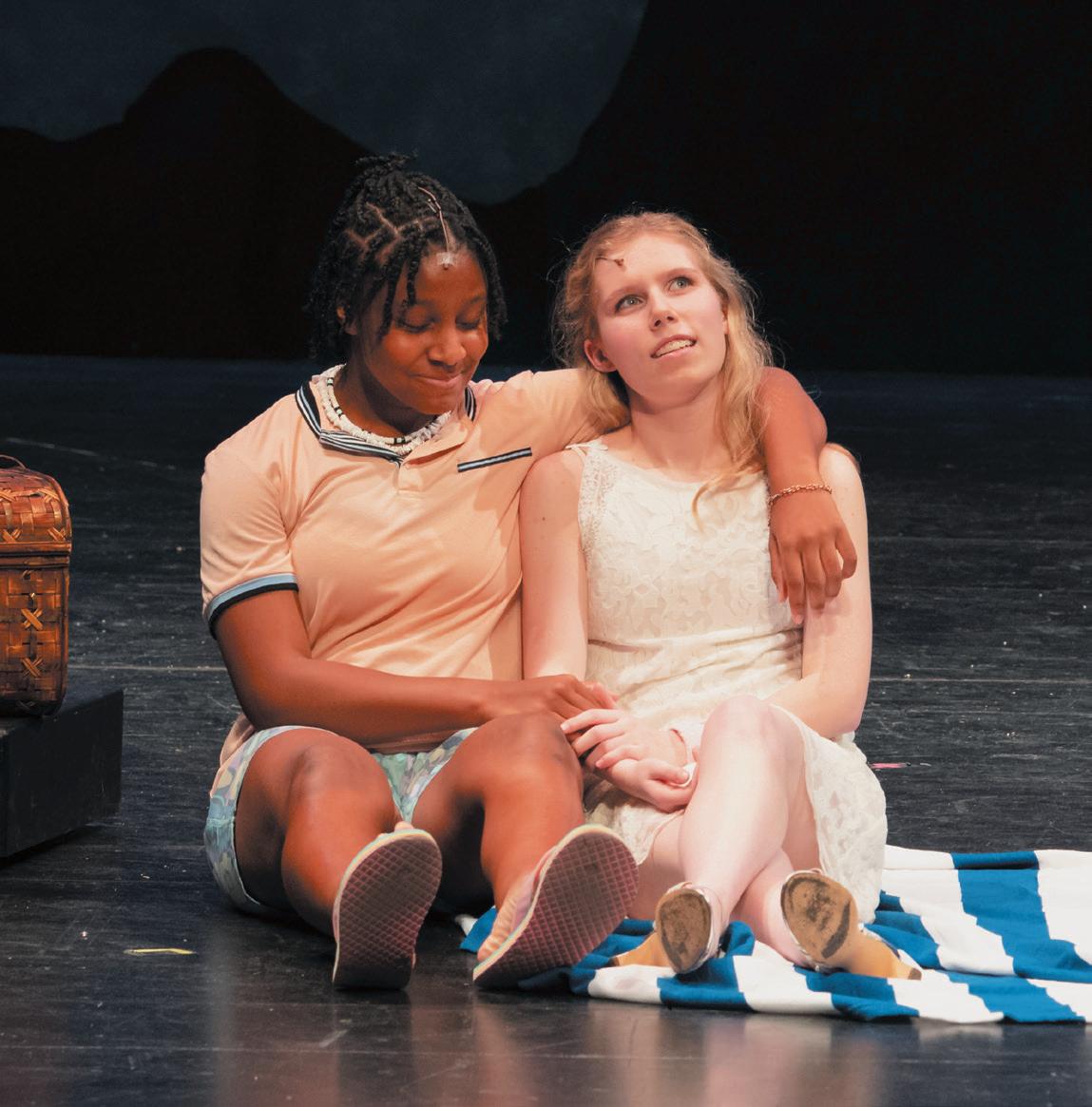
with one another,” said Upper School Theatre Director Valerie Hauss-Smith. “If one was working on something, the other one was watching, or they would give each other notes.”
The decision to double cast allowed more students to showcase their talents and perform a lead role. The actors enjoyed this experience and the bonding that came with it.
“I really liked it,” said Herrmann. “It gave all of us a chance to participate and we all got really close.”
Double casting was successful through the collaboration of the members of each cast. For example, Nelson and Kerridge would block scenes, rehearse dances and rehearse songs side by side.
However, the acting choice did not come without challenges. With two casts, rehearsals took twice as long and pushed the limits of scheduled class time.
“I think it was mostly hard just having time to run everything like twice, because we had to run it at least two times for each cast,” said Nelson. “So, that was a little bit hard to navigate, especially with it being a tighter schedule.”
Another new tradition with this musical was the cast and crew performing before opening night for the Upper School. Audience members appreciated the opportunity to see the musical with their peers and felt it was an enjoyable experience.
“I liked it more than ‘Mean Girls’ last year because we saw it all together as a grade so we could all experience it together and get everyone’s reactions,” said sophomore Valentina Rojas.
This year there were fewer male actors
who participated in the musical than in previous years. This meant that many of the male roles were played by female actors. Sidrah Tarpeh, who played Sophie’s fiancé Sky, said that one challenge she had to overcome was her apprehension about correctly portraying her role.
“It was mostly insecurity about ‘am I going to be able to fit in this role and make it real and make it what I think other people would want to see,’” said Tarpeh.
To prepare for the role, Tarpeh worked with Fine Arts coordinator Maxey Goold.
“A lot of it was me talking to Ms. Goold about ways to perfect my character and get my accent right and really know my character so that I could perform it in the best way that I could,” Tarpeh explained.
The ensemble and tech crew, as involved in the musical as the lead actors, helped different parts of the show run smoothly and built the sets.
“I am the proudest of how much the ensemble were engaged, singing, dancing, harmonies, you know, backup singing, moving things around,” said Hauss-Smith. “Without them, this show could not have happened. All of the stuff that needs to happen to bring in the pizzaz, you know, that was ensemble.”
The technical theater students took care of all the on-stage business such as building the sets, gathering props, making costumes, managing effects and changing out the sets during the performance.
“I was actually pretty impressed,” said Melgarejo. “I did build some of the tech as a class, and I was very impressed with how well constructed it was and how everything just came to life.”
Sophomore Geneva Smith-Kuzmich, an ensemble member, expressed pride in the group’s performance.
“We had a good turnout, and everybody was really confident in themselves,” said Smith-Kuzmich. “It was amazing to see people stepping out of their comfort zones.”
From the bold dance moves to the fact that female actors played several of the male roles, Smith-Kuzmich says that “Mamma Mia!” pushed the envelope and gave the audience a memorable night of entertainment.
“I hope that they kind of fed into the magic of theater, and I do hope that they appreciated it,” said Smith-Kuzmich. “I hope that it emotionally touched their heart.”

By all measures, senior Andrew Cai is an outstanding student. He makes top grades and excels in extracurricular activities. And yet, like most teenagers these days, he increasingly struggles to manage one area of his daily life.
Attention span.
Cai was reminded of that one recent weekend as he scrolled through his YouTube feed as he usually does to cure his boredom. Normally the videos in his feed would be enough to hold his attention, but not on this occasion. After only two minutes he found himself growing antsy and wanting to check his phone.
“I really wanted to tap out or look at my phone to check what my friends were texting me,” said Cai.
As he has become more attached to devices and short content over recent years, Cai says his attention span has steadily decreased.
At Greenhill and elsewhere, students and educators are wrestling with the issue of shortening attention spans among younger generations.
“It’s probably a ton [of factors],” said Upper School science teacher Michael Haskins. “Obviously, smartphones and social media are the big ones.”
For Haskins, the struggle to keep the attention of students during class is ongoing.
“I feel like nowadays [teachers] have a ton of pressure to have a very compelling lesson, and we have to constantly shift gears, otherwise kids just zone out or the laptop starts to open up in class,” said Haskins. “I vividly remember my first year and having a discussion in physics, everyone had just paper, notebooks, and pencils, and they were just listening.”
But those days are in the past.
Growing reliance on technology, especially phones, in part due to the significant amount of time that students were required to be on their devices during the COVID-19 pandemic, is a driving force behind lower attention spans.
“Phones are, especially now more than ever, the norm for students,” said Head of Upper School Trevor Worcester.
The question that Worcester and other Greenhill administrators, faculty and students are now discussing with increasing urgency is what to do about it.
anxiety and struggles with mental health.”
A clear downside of these apps is the fact that they are a large contributor to declining attention spans, particularly among Generation Z, according to Worcester. The reason for this is that social media offers a never-ending cycle of shortform stimulation.
Scrolling on social media apps “diminishes people’s ability to seek out longer term good things,” said senior Prabath Girish.
Companies personalize their algorithms to create an individualized feed that keeps users endlessly scrolling.
“Media producers in general have created the consumption of media to be in small snippets, which sort of rewires brains to want more,” Worcester said.
A 2022 study by the Wall Street Journal shows that the viewing of short-form content triggers immediate bursts of dopamine. Users then associate the media with pleasure and reward, initiating addiction.
“Things like TikTok and Instagram are built to increase our dopamine levels, and that’s inevitable,” said junior Soyam Mohammed.
Teenagers in critically maturing years are most affected, according to Heinrichs.
“I think students who are at developmental milestones are most impacted,” said Heinrichs.
Notifications can also be a huge distraction to many students, especially when they are off their devices.
the general change in habits made it difficult for students to adapt to online learning, which leads to a shortened attention span.
“I think at school we have routines, and we have structure, and then the daily routine and structure was disrupted [with COVID],” Zachariah said. “I think that has affected our students a lot. Especially because we were [teaching] behind screens.”
Transitioning from responding to text messages while attending online class to having to curb device usage proved especially difficult for students after the pandemic, according to Girish.

A 2022 study conducted by the Pew Research Center shows that smartphone access among teens has soared in recent years, from 73% in 2015 to 95% in 2022.
At Greenhill, every Upper and Middle School student is provided with a schoolissued laptop for academic purposes, leaving phones as the escape from stress and anxiety, according to Upper School Dean of Students George Heinrichs.
“Students are constantly on a treadmill to keep up with their academic work,” said Heinrichs. “That sort of discomfort can lead to wanting to go on your phone.”
When on phones, social media apps such as Instagram, TikTok, Snapchat, YouTube and Facebook serve as places where people can connect digitally with others.
“I think it just has an impact on how you are a social being,” Middle School math teacher Rachel Ainsworth said. “And because it’s a constant connectivity, I think it leads to
“Whenever I get a buzz or a notification, I automatically have to look at it,” said sophomore Max Backover.
A study done in 2023 by the Michigan School of Medicine found that on an average day, U.S. teens receive a mean of 247 notifications.
To combat these distractions, students are forced to find ways to create a focused environment, says Girish.
“When studying for a big test, I’ll keep it in another room, which I think helps with efficiency because I’m not even tempted,” said Girish.
Notifications prove especially scary to not only students at Greenhill, but also faculty who are concerned about students losing focus, says Heinrichs.
However, teachers also recognize that school-related technology could be part of the notification problem.
“We send you emails all the time,” said Heinrichs. “I myself get like 100 a day, but regardless that’s an attention-grabber, too.”
In addition to the increase in smartphone use after the pandemic, Lower School science teacher Rima Zachariah says
Correlating the decreasing attention span with the increasing usage of these devices, Heinrichs says he has noticed that students are utilizing phones not only as tools but also an escape from boredom during the school day.
“I think [for] a lot of students that lack of attention span can also be in discomfort with sitting in the present or sitting with boredom,” Heinrichs said.
Girish says he’s noticed students begin to overconsume media in these moments of boredom.
“We’re always looking for the next thing to do,” Girish said. “Sometimes we’re not even able to just sit down and do nothing for five minutes.”
Within the Middle School, Ainsworth says that she’s noticed students less motivated to spend time on problems than in the past.
“Perseverance and grit is where I see a lack of attention span,” Ainsworth said. “That ability to sit with a problem and be uncomfortable and not get a response of whether you’re on the right track or not.”
In addition to this, she says that many of her fifth-grade students want games to be integrated into their lessons and class times, but this can also limit attention span.
development, which shortened attention span.
“I think additionally, with COVID, each grade was impacted differently, and we see it coming in waves,” Heinrichs said. “What it seems to be is the students who were at developmental milestones when they were socially isolated were the most greatly impacted.”
more non-phone-related activities.”
But Mohammed contends that teenage struggles with attention span issues and emotional and mental health go beyond smartphone use.
“I feel like you can’t just create a blanket around and say that an increase in depression and anxiety and other mental health issues is because of phones,” said Mohammed. “It’s really important to emphasize that correlation is not causation, and I feel like a phone ban at school doesn’t resolve all of

against that inclination to gamify everything.”
Furthermore, teachers on campus think that the increased technology use at school could be leading to a decrease in cognitive capabilities.
Zachariah says that in her experience teaching Lower School students at Greenhill, she’s noticed a decrease in communication among third and fourth graders.
“I’ve noticed that when they should be interacting with other students, they don’t usually,” Zachariah said. “Social interaction is very important at this age, and I think this decrease may be due to the fact that these students now were behind screens in kindergarten.”
Heinrichs says that he believes COVID in general significantly impacted students’
sneak their phone into class. Cai says he believes a phone ban would be good for the Upper School.
“I feel like the first couple of weeks will be rough, simply because students will really want to use their phone,” said Cai. “I think after a few weeks, though, people will get used to it solely because phones are like a temporary escape. But now that the phone is gone, you have nothing to do except talk with your classmates or focus on class.”
Girish agrees. He says the ban could increase attention span while students are on campus.
“It’s more so the habits that are happening outside of school that I think the phone ban would not do much to solve,” said Girish. “I think throughout the school day, however, it would encourage people to actively go out and talk to people more, do
Worcester acknowledges the importance of continuing to discuss with students the value of proper technology use.
“I don’t think it’s good to just say we’re taking away [phones] and you figure out what the other 16 hours of your day looks like,” said Worcester. “I think that’s something we should investigate, which is why we’re taking this year to really look at all
Mohammed suggests that a school phone ban could result in an unintended consequence by increasing phone use at
“I feel like not having phones at school doesn’t change having our phones at home,” said Mohammed. “If students feel like they haven’t fulfilled their dopamine dose that they get from watching TikTok or other things throughout the day, they’re just going to go home and do that, basically hurting
Additionally, Backover says that when students don’t learn to manage screen time and technology use in high school, they are
“If at some point people need to learn how to use their phones or technology, they’ll need to decide for themselves when enough is enough or how much is too much screen time.” said Backover. “And when you go to college, having a phone ban in high school would prohibit students from learning how to navigate and use necessary tools on their phone. It wouldn’t prepare them for the
Long term, faculty and students alike recognize the implications that decreasing Backover says that progression through high school and even college requires greater
“If subject matters are more difficult to comprehend, you’re going to need to use more mental capacity, and if that mental capacity is absent, then you won’t get what you’re supposed to from the class,” said
Haskins says that when students get to college, those who have greater attention spans have an advantage of being able to focus for longer periods of time and do better academically.
For the future, Worcester says he hopes students will continue to participate in activities for longer periods of time simply because they find the activity engaging.
“I hope there’s a shift that can at least find more balance between the good stuff these devices can bring, but also the good things that we’ve had for hundreds of years as humans,” said Worcester.
Punnam contributed reporting to this article
Vedant Subramanian, Justin Wu
Since arriving at Greenhill in 2021, Director of Design and Innovation
Matt Abbondanzio has introduced various opportunities to allow students to get a taste of the entrepreneurial world.
These opportunities include the What’s NEXT Pitch Event and the Design Thinking to Open Entrepreneurship class.
Abbondanzio describes two objectives in his efforts: He wants to teach students how to follow their business ideas; and he wants to drive student entrepreneurship at Greenhill.
“I think there’s a lot of entrepreneurial spirit within the school as students sort of realize that there’s some work to get done to effectively prove out a business,” Abbondanzio said.
Abbondanzio didn’t start from scratch in trying to encourage entrepreneurial instincts among Greenhill students. For example, groups like Distributive Education Clubs of America, or DECA, and classes like Finance and Accounting have been in place to encourage these impulses, according to senior Max Johnson.
Instead, Abbondanzio set out to build on those efforts with more high-profile events.
On April 29, Greenhill held the first ever What’s NEXT Pitch Event. Attempting to earn an initial investment from Greenhill, students pitched their business ideas to a panel of local executives and school administrators.
“Although it was a little scary at first, it helped give all those [students who pitched] an idea of how the future would look like,” said sophomore Rahul Singhal, who pitched an idea for a company that insures founders’ initial investment in their startup.
In the months leading up to the pitch, students worked hard on refining their ideas and crafting a presentation, either through preparation outside of school or during the Upper School Design Thinking class taught by Abbondanzio.
Junior Hank Utay says students in the class learn how to conduct interviews, come up with business ideas and create detailed financial models.
Most importantly, Utay says students gain experience in effectively creating and delivering presentations.
“You’re learning about the design process,” said Utay. “The class allows you to explore the steps entrepreneurs take to create a business.”
Students carried out the process of creating a business idea in small groups last year, which then culminated in some groups from the class pitching at the event, according to Utay. Abbondanzio says there weren’t enough spots in the event for all students in and out of the class to pitch, so they have made the selection process more rigorous for the upcoming event.
“What we decided to do this year was, to make it a bit fairer, [students] will have to have a good business plan and justification for what they’re asking for,” said Abbondanzio.
Along with the Design Thinking class, Johnson says entrepreneurship is part of the Finance and Accounting class.
“There’s a larger emphasis on entrepreneurship, and one of the main projects is building a business from [the Finance and Accounting] class,” Johnson said. “It’s not super real-world, but we do go through each of the phases that an entrepreneur would need.”
Greenhill clubs also provide students with entrepreneurial opportunities, according to Johnson. He says one such club, DECA, which he leads with Singhal, specifically focuses on honing entrepreneurial skills at competitions, where students are given a problem to solve with business ideas they must come up with.
“I think that for those who want to really explore what it’s like to understand business from a startup level, that DECA and Finance and Accounting are two really fantastic avenues for that,” Johnson said.
With the introduction of new entrepreneurial opportunities, Abbondanzio says that he is driven to teach principles of business that will impact students for the rest of their lives.
“Having the vision and the ability to see that process, and ideally going through that process, is really valuable,” said Abbondanzio. “When they get out to the real world, they’ll know that it’s not just, ‘Oh, I have an idea. Let’s just go with it!’
There’s research and work that has to get done.”
Abbondanzio says he has kept this idea in mind as he pushes to open more avenues for student business at Greenhill, and as a result, there have been high rates of interest.
“There’s a lot of interest this year for the What’s NEXT Pitch,” said Abbondanzio. “I think a lot of students are also interested in the Design Thinking to Open Entrepreneurship class.”
Many students describe being engaged by learning entrepreneurial principles. Singhal says the processes he learned while in the Design Thinking class spurred interest outside of class.
“It showed me my passion for business, especially with the class and the teacher, Mr. Abbondanzio, who helped me find that passion,” Singhal said. “Today, I am working to start my own business. I’m trying to build my own nonprofit, and I’m trying to build my own ideas for big businesses.”
Inspired by learning about the design process and participating in the What’s NEXT Pitch Event, Utay says the lessons he learned apply to every class he takes.
“Even outside the specialized field of entrepreneurship, [the Design Thinking class] teaches problem-solving skills and how to research any problem or idea you encounter,” Utay said.
Senior Kaavya Sampath, who participated in the pitch, says that she believes entrepreneurship is open to all students at Greenhill.
“I think that there’s a various amount of opportunities for students to do it, along with mentorship from faculty,” said Sampath.
She also says that the qualities necessary for entrepreneurship are being taught across campus.
“Leadership is definitely something that’s ingrained, even in
small ways in Lower School, with the carpool leaders and other people who lead the assemblies, to student council starting in fifth grade and to all the different club opportunities that you can have to lead a club in Middle and Upper School,” Sampath said.
Going forward, Abbondanzio says business will remain a key part of the Design and Innovation program through classes and the continuation of the pitch event taking place on March 31 and April 28.
“We define innovation as identifying the right problem to solve,” said Abbondanzio. “There needs to be human need, technical feasibility and business viability. When you meet all those three things, you have innovation, and that’s also the start of entrepreneurship.”

As more opportunities arise for students, Singhal says he is glad Greenhill embraces business.
“I think the school really helps people build their skills and gives them opportunities,” said Singhal. “With the pitch, the class and everything else, I think it is ingrained in this school because it helps give them the opportunity to realize what they want to pursue in the future in business.”
Abbondanzio says he would like to continue to push entrepreneurship out to the students and make Greenhill’s program special.
“Our students are working for real companies, and they are solving real problems,” said Abbondanzio. “They’re going to have a very clear process about identifying the right problem to solve, and that’s the big difference here. For us, the vision is to continue to push that, in order to get our kids started earlier.”
In 1997-1998, former Head of Upper School George King sought out students from the Greenhill Band to form a group that would offer an advanced jazz improvisation experience.
The result was the Upper School Jazz Combo.
With the help of Upper and Middle School Director of Bands Brian Donnell, King used his skills as a professional jazz musician to help the combo members with their performances.
“After Mr. King left Greenhill, we just continued the combo,” Donnell said. “Now, I’m there to lend support where the students need it.”

The combo is a smaller group drawn from the Upper School Jazz Band, which is comprised of many students who play in the concert band. Another defining feature of the combo is its predominantly student-led nature.
There are a variety of instruments in the combo, and it is open to anyone as long as they have an interest in jazz and are in the concert band, according to senior Fernando Gupta, who is a combo saxophonist.
“There’s a little bit more of a vibeyness to jazz because it is a style that is a lot less scripted than something like concert band music,” said senior Prabath Girish, who plays the drums. “For example, our forms are quite ambiguous; a lot of it is improvisational.”
invitation to all band members, it is really up to the students to determine if they are fit for Jazz Combo, according to Donnell. As a member of the combo, students are expected to demonstrate mastery of their instrument and attend rehearsals and multiple performances.
because you have to be mature enough on your instrument to be able to handle the music and play an instrument that is needed,” Donnell said. however, is welcomed with open arms, according to sophomore Ray Guo, who plays the guitar. Because the combo has lasted so long, the members carry on the traditions by welcoming younger musicians as seniors
graduate.
In fact, several members of the combo had never played jazz before joining.
“I was a part of band, but I wanted to try things outside of my comfort zone, which is why I ended up joining combo,” said Girish.
“I also think the music we play is more fun and we generally play music that I am more inclined to listen to.”
Senior Marieve Donnell, who plays the trumpet, says she joined the combo in the second semester of her sophomore year because many of her friends were members and they needed a trumpet player.
“I genuinely had no interest in the genre because I’m very picky about my music,” said Marieve Donnell. “As I started getting more involved, it became one of my favorite genres and it is now my homework music, and I’m probably the most productive when I’m listening to jazz.”
There’s a little bit more of a vibey-ness to jazz because it is a style that is a lot less scripted than something like concert band music. For example, our forms are quite ambiguous; a lot of it is improvisational.”
Being encouraged to join is not an uncommon occurrence. Many members were sought out by upperclassmen to continue the combo as the seniors near graduation.
“[Senior] Ali Agha scouted me out,”



“We definitely play more written out, classically inspired music as well as more contemporary rock or funk,” said Agha. “We’ve broadened our scope to allow for more people with different music tastes and different instruments to play with us.”
Some songs the students play are not jazz but simply songs from genres for which members have an affinity. For example, the combo played a song by the British-American rapper MF DOOM at an Independent Schools Association of the Southwest festival coffeehouse after Girish had discovered the artist’s work in the previous months.
“I really enjoy being able to explore more music than I would without this opportunity,” said senior Lizzie Nassi, who plays the saxophone. “We get to play a variety of music at a large range of events and just do more with music.”
The group signs up to play for multiple events, ranging from in-school Jazz Night performances with the Greenhill Improv Troupe to out-of-school charity events with the Aga Khan Foundation.
members to be very in line with each other when performing, an element unique to jazz.
“If Ali is soloing while I’m drumming, I have to keep up with what he’s doing and either match or amplify his energy,” said Girish. “You have to think on your feet and pay more attention to what other people are doing to keep the vibe together. That’s one of the parts of jazz that’s the most fun.”
The combo is currently comprised of mostly seniors, so Agha says the group is looking to recruit younger students. Agha, who joined as a freshman when the combo was dominated by seniors, says the group is having similar problems to when he first joined.
“Their problem was kind of like what we’re facing right now,” said Agha. “There was a fear of ‘wait, we need more people’ so we were trying to grab as many of our friends and people that we thought might be interested in joining us.”


Our original plan was to eat ramen; however, Varun begged us to go to Yard House, an American sports bar. To our dismay, as we walked into the Addison restaurant, we received a text in our “Evergreen Seniors” group chat from Varun saying that he would not be showing up. In addition, Chloe texted saying she was stuck doing homework at home.
Thus, our hopes and dreams of an Evergreen seniors bonding dinner were crushed. Despite these emotional setbacks, the five of us remaining were determined to make the most of our Varun- and Chloeless experience.
The tablet with games at our table was
promising, but, $3 to play a round of trivia left us aghast. Nevertheless, we pushed forward and ordered our food. Here was our experience:
Aria (Blackened Shrimp Tacos):
I should’ve known what I was in for when my shrimp tacos came in flour tortillas as thick as my AP Euro textbook. Now, by no means was I looking for authentic Mexican tacos at an American sports bar, but I will say, the overwhelming pound of salt on the tacos was extremely off-putting. Honestly, I think they accidentally doublesalted the tacos and forgot to add any salt to the rice and beans on the side, because they tasted as bland as… Well, I think it is time for me to spare the last bit of Yard House’s

HOUSE: The Evergreen Senior Staff digs into the Oreo Brookie from Yard House. Within minutes, the plate was clean, marking a sweet conclusion to our trip.
Fellow fans of “Wicked,” rejoycify!
The senior staff of the Evergreen bestows upon you our review of Jon Chu’s hit 2024 movie adaptation of the classic 1995 spin-off of “The Wonderful Wizard of Oz.”
Led by worldrenowned pop star Ariana Grande and Broadway veteran Cynthia Erivo, “Wicked” swept us up in a “thrillifying” 300 minutes filled with fantastical escapism, quick-stepping choreography and intricate musical numbers.
Grande and Erivo, supported by a star-studded cast that included Jonathan Bailey, Michelle Yeoh, Jeff Goldblum, Ethan Slater and Marissa Bode – and guest-starring Peter Dinklage voicing a talking-goat professor – certainly put on quite the show for us. With their larger-than-life characters and
tastefully exaggerated acting, it felt as if we were watching a live stage musical, not just a movie.

From the very start, we were transported to the land of Oz, with the opening scenes depicting the vast tulip fields of Munchkinland, a quintessential nod to the original book. In fact, the production team actually planted 9 million tulips across 25 acres to capture that iconic shot, another physical manifestation of their dedication to preserving such a classic and nostalgic work. As the music began, the opening notes that echoed through the theater had us on the edge of our seats. It was pretty true to the original musical, save for some added scenes to give us more time to absorb the intricate sets and costumes. The sound editing was another
dignity.
Christan (Classic Cheeseburger + Parmesan Truffle Fries):
The classic cheeseburger had a nice thick patty which had a solid flavor. However, I had to ask for lettuce, tomatoes and onions on the side, which surprised me since that meant the original burger was just cheese and a patty. The Parmesan truffle fries were nicely flavored, but they weren’t very crispy.
Daniela (Chicken Tenders):
I consider myself the female Anthony Bourdain, the late celebrity chef and foodieadventurer who could be legendarily harsh in his criticism. So here goes: Honestly, I was displeased with my order of chicken tenders because they were unseasoned and slightly soggy. How can you mess up chicken tenders? However, my sweet potato fries were crispy and salted, a redeeming factor of my meal.
Evie (Mac and Cheese):
I think this was a decent mac and cheese with a prominent truffle flavor and smoky pieces of bacon. However, it was a tad bit salty and a little too cheesy and rich for my taste. I think the crispy breadcrumb topping was the star of the show, bringing some much-needed texture to what could’ve been a very one-dimensional dish.
Lyna (Fontina Vodka Penne):
My feelings about the pasta pretty much sum up my thoughts on the whole restaurant: mediocre. I didn’t feel much of anything as I took my first few bites, and I was actually enjoying it. But by the time I was halfway through, the pasta started

tasting too salty – so much so that I didn’t finish it. The basil leaf on top was the last straw. Why do restaurants throw them on dishes for no reason? Yard House, I’m looking at you.
While we had varying opinions on our meals, there was one thing we agree on: dessert at Yard House is a winner.
We were faced with tempting selections that included a crème brûlée, chocolate lava cake and vanilla ice cream. In the end, we chose the Oreo Brookie, and we can confidently say we would return to Yard House just for that dessert.
The warm chocolate chip cookie base, layered with a rich chocolate brownie and topped with vanilla ice cream and whipped cream, captivated us with the first bite. Within a matter of seconds, the plate was completely clean – a perfect conclusion to our otherwise underwhelming dinner.
thing they excelled at, with a mix of recorded and live vocals lending a more authentic sound to the songs.
However, some parts were a bit “confusifying”, to put it whimsically.
In the opening song, “No One Mourns the Wicked,” filled with high opera-style riffs, we found it difficult to understand some of Grande’s “Galindafied” trilling notes. For those who don’t already know the plot of “Wicked” (like Christan and Lyna), such borderline intelligible lines were a jarring introduction.
Additionally, the 300-minute run time was a bit long for our tastes. Although it was nice to be immersed in such a magical world, we started to get antsy toward the end of the second act – all of us waiting in anticipation for the plot to build up again. And build up, it did, culminating in an intense and fast-paced final act, with a breathtaking and goosebumpraising concluding song, “Defying Gravity.”
This song is on its own tier of excellence – Aria says that it even gave her chills. Erivo’s powerful voice brought the theater alive, keeping us all entranced as she soared across the screen, defying gravity in her

black witch hat and long, trailing cape. And we can’t forget Erivo’s iconic “battle cry,” which closes the movie. We felt like it was the perfect end to the first of the two-movie telling – not quite a cliffhanger but still leaving us wanting more.
But unfortunately, now comes the agonizing year-long intermission before Part II. We will be waiting with anticipation for yet another colorful, eccentric, just-overthe-top-enough box office hit.

ensure operations run smoothly.
Behind the scenes of Greenhill athletics, student managers work to promote leadership and teamwork on and off the field. From laying out the equipment for practice to helping the team warm up for a game, many athletes and coaches say managers are the backbone of every team.
Several students recently expressed interest in managing the softball and boys’ basketball teams. Once more informal, the manager’s role has evolved into a structured and vital part of athletics.
“The best kind of managers are the ones who, once you tell them the expectations for a game day, are already doing it the next game,” said varsity softball Head Coach Monica Stephens. “When a manager does their job right, they are a crucial part to the game day sequence.”
Stephens cited last year’s efforts by junior Lincoln Clemons as an example of an impactful student manager.
“Last year, junior Lincoln Clemons really stood out,” said Stephens. “He’d ask, ‘Hey Coach, how can I help?’ and he’d already be doing what needed to be done by the next game. That level of initiative makes such a big difference for the team.”
For coaches, managers alleviate much of the stress that comes with running a team. From setting up for practice to handling logistics during away games, managers
Game day preparation often involves organizing equipment and troubleshooting last-minute issues. Managers prepare teams for their respective competitions.

“During the games I’ll run the clock and help with the scoreboard,” said senior Lilliana Alston, the girls basketball manager.
“I also will help out setting up equipment and bringing that to games.”
For the basketball teams, managers often assist with warmups, run the scoreboard and keep the water bottles filled. Softball managers help set up the field, organize the dugout and retrieve equipment. Across every sport, managers handle tasks that allow players and coaches to focus on their performance.
“When we have managers it’s just a nice extra hand,” said Stephens.
Last year, junior Lincoln Clemons really stood out. He’d ask, ‘Hey Coach, how can I help?’ and he’d already be doing what needed to be done by the next game. That level of initiative makes such a big difference for the team.”
Team managers serve as a bridge between coaches and players, ensuring clear


communication. They handle tasks such as informing players and coaches about changes to game times or other lastminute updates.
In the heat of a game, everything can get quite overwhelming, so a student manager can translate plays or help the players understand strategy, according to members of the girls’ basketball team.
“Our manager films games from our tournaments for [the sports software platform] Hudl, which is really helpful for figuring out what went wrong and right,” said sophomore Diya Jain.

students develop teamwork and leadership
“For some of these kids, this is their chance to be a part of a team,” said Head of Athletics and Physical Education Jarrett Shine. “Even if they’re not out there playing, they’re learning about the effort it takes and the competition.”
The benefits of managing extend beyond fields and courts. Managers find connections and community among players.
“I’ve had kids that are managers that become best friends with people on the team, and they didn’t know each other at all before softball,” said Stephens.
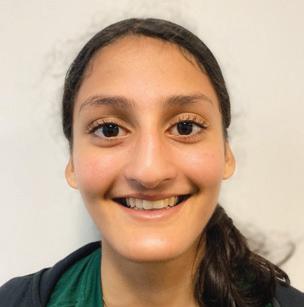
Student managers seek this opportunity for a multitude of reasons. Many students find the position desirable because it provides one sports credit toward the six required for graduation.
“I love being able to have a sports credit, enjoy a sport and manage a team,” said Alston. “During games I get to sit on the bench with them and keep the spirits up.”
Our manager films games from our tournaments for [the sports software platform] Hudl, which is really helpful for figuring out what went wrong and right.”
For others, managing provides an opportunity to explore sports they might not have tried otherwise.
“I didn’t really have any experience in basketball before,” said Alston. “But I really love watching basketball and seeing my friends play and work hard.”
Beyond logistics, managing helps
Shine said that the role gives students who might not participate in sports the opportunity to experience the team environment.
“I thought it would be fun to be a part of a team and be around new people, because I normally just do football,” said Clemons. “It was also nice to have something extra to do after school and it’s a great way to meet people and become a part of something bigger.”
Alston also notes how managing introduced her to both a new sport and new friends.
“I didn’t really have any experience in basketball before,” said Alston, “but I really love watching basketball and seeing my friends play and work hard.”
In addition to the many opportunities, managing a sports team also comes with its challenges. Since managers have the same practice and game schedule as players, they develop time-management skills. Student managers face pressure to balance team and classroom expectations, according to Clemons.
“Being a manager has been a great experience and I really recommend people to try it in the future,” said Clemons.
Talia Sidikaro, Cate Simpson
Team bonding has long been a key to competitive success in sports.
As sports become more and more competitive, team chemistry becomes even more important, athletes say.
How that bonding occurs looks different in every sport at Greenhill.
In January, for example, the girls and boys swim teams will attend a University of Texas vs. University of Virginia meet in Austin as a teambonding exercise.

Some Greenhill sports teams host a scavenger hunt. Some have sleepovers. And some have team dinners.
These activities are not only fun, athletes say. They also strengthen connections between teammates.
“To play well together as a team, you have to know each other and understand each other,” said senior Amanda Park, a field hockey captain.
Although practices benefit a team’s skill, improving the relationship between players can also have an impact on the way they play. Connections between players strengthened through bonding can be seen on and off the field, athletes say.
“People care more if they are closer
with the people on their team,” Park said.
Senior cheer captain Jane Hark says team bonding builds trust in teammates.
“I think it makes us more connected and confident in our skills and each other’s abilities as well, especially when we are performing on the field,” Hark said. “And we are able to communicate better when things are going wrong or if something happens, and being able to bond with your teammates and form that connection is important.”
When a game isn’t going in their favor, team members still must put in their maximum effort to try and turn it around. And that’s where a closely bonded team can excel.
“You have to be able to keep the energy up and you have to be able to have trust in your teammates to lift you up and let them be behind you,” said senior Alden Kendall, a boys volleyball captain.
One popular way of building team chemistry is a scavenger hunt.
This consists of juniors and seniors driving younger teammates to various points to complete specified tasks. These tasks could include driving to a senior’s house and jumping into their swimming pool, or putting whipped cream on their face.
Kendall says that trust is a big factor when it comes to the scavenger hunts.
The activity is not only fun, but it also helps welcome freshmen and new students to the team, athletes say.
“I think it’s very nice to have [the scavenger hunt] because coaches and

Greenhill parents are really trusting the older students on the team to set the example and be responsible for everyone,” Kendall said.
Meeting new players can change the dynamic between players and the way the team plays together.
“After being on the team for three years, getting to know the freshmen and the new people on varsity is so fun,” said junior Jacquelyn Dishman, a girls volleyball captain.
Dishman says that team bonding as a whole helps incorporate new girls into the
team because it gives them a set of friends before the school year begins.
To play well together as a team, you have to know each other and understand each other.”
As experienced Greenhill athletes have learned over time, team dynamics are always a crucial part of bonding and playing together.
“Everybody has to be together, you don’t want outcasts,” Kendall said. “It is very, very important to get the whole team cohesive.”
In 2021, Head of Athletics and Physical Education Jarrett Shine began the Athlete of the Week award to celebrate and recognize the talent and dedication of exemplary student-athletes. Here are the Athletes of the Week honored for the fall sports season:

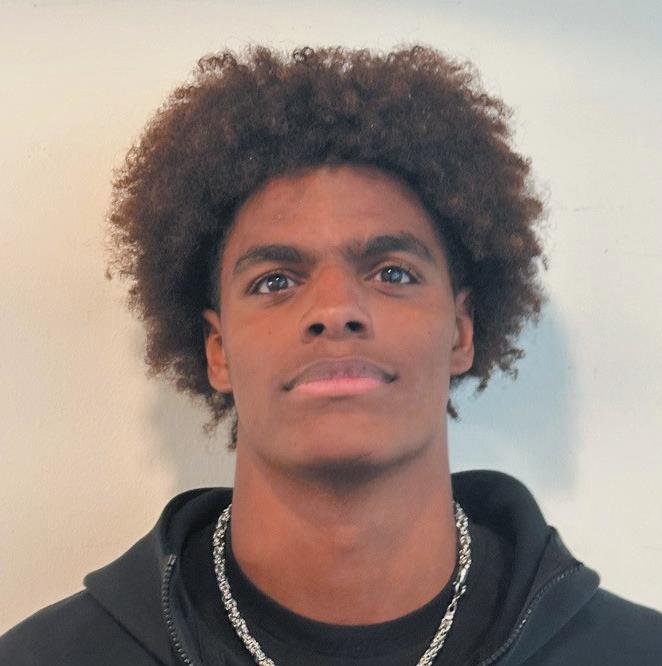
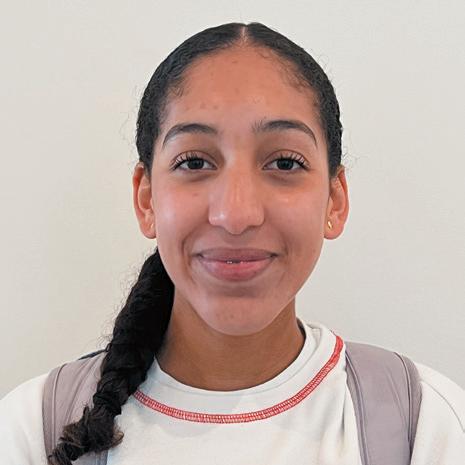




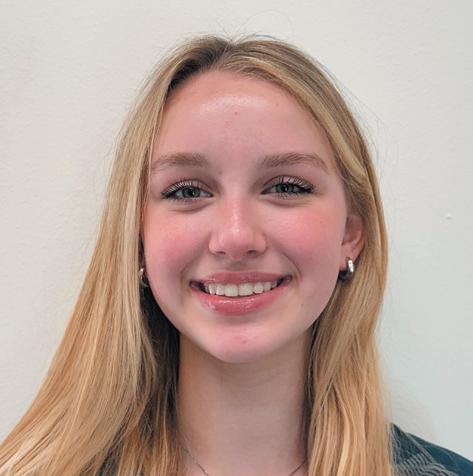

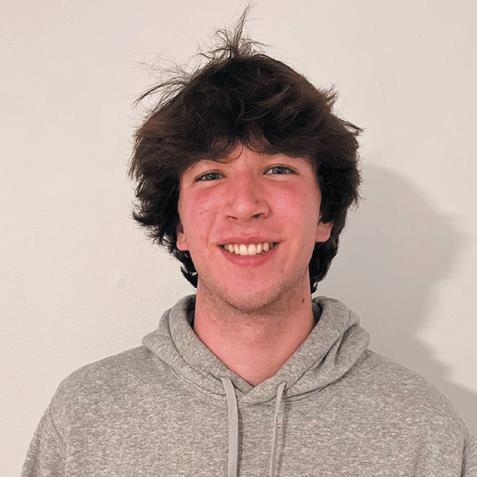
Senior Amanda Park’s journey to her recent verbal commitment to play field hockey at Cornell University began almost by accident.
A Cornell coach who traveled to Texas to watch one of Park’s teammates play in a scrimmage in Austin left impressed by Park. Several weeks later, after a flurry of interviews and an in-person visit to Cornell, Park received her offer to join the field hockey program at the Ivy League school in Ithaca, N.Y.
Park’s journey to becoming an elite field hockey athlete was unorthodox. She initially picked up the sport in seventh grade to fulfill a sports credit requirement. After Middle School, she considered quitting until her mother convinced her otherwise.
Entering the Upper School, she was able to earn a valuable role on the varsity team as a freshman.
The seniors on the team inspired her to truly commit to field hockey.
“I looked up to [the seniors] so much, and then when I joined when pre-season started, that just confirmed it,” Park said. “I admired them a lot and I was getting better because I was trying harder.”
Her freshman year would turn out to be a successful year for the team overall, resulting in an undefeated counter season and a semifinal loss to St. John’s School of Houston in the Southwest Preparatory Conference tournament.
However, Park faced difficulty when starting out with Lonestar Field Hockey, her club field hockey team, after her freshman season concluded. Initially, she wasn’t allowed to participate in team travel practices.
“It was really hard because I didn’t know how I could get better if I couldn’t even go to the practices,” Park said. “It took me a while to even get invited to tournaments when a bunch of other girls in my grade were already talking to coaches.”
Through her hard work, Park’s coaches took notice, and she was elevated to a full participant in her club, fully opening herself up to exposure for college scouting.
presence on the team helped to build team chemistry through her optimistic energy.
“[Amanda’s] dedication to bringing up everyone else around her creates a positive environment,” Stagen said. “When I was a sophomore on the field hockey team, she made me feel motivated and welcomed on the team.”
Park says that at Cornell, she hopes to have a similarly large impact on their field hockey team.
One of Lauren Harrington’s early motivations for playing field hockey was a typical one for many teenage athletes: She had a sibling playing the sport.
But another motivation wasn’t so typical.
“My mom told me I could get Snapchat if I play club [field hockey],” said Harrington.
And so, she got her Snapchat account and started down the road to becoming an elite field hockey player.
“I realized that I can’t just dribble through everybody anymore because I’m not going to be faster than everyone in the field,” said Harrington. “I learned how to utilize a pole and how to air dribble, and that made me a better player.”
Another challenge was moving from the midfield position to play the much different position of center back.

Park says that being named a captain of the varsity field hockey team at Greenhill has been a dream since her experience as a freshman.
“Being a captain was always something that was always a goal in mind when I was on the team,” said Park. “I wanted to make sure I could be like how the seniors were for me when I was a freshman.”
Junior Sloan Stagen says that Park’s
“I want to play in some of the games,” Park said. “I want to, by the end of my time at Cornell, either become a captain or play regularly.”
I looked up to [the seniors] so much, and then when I joined when pre-season started, that just confirmed it. I admired them a lot and I was getting better because I was trying harder.” December 18, 2024
But before college, as Park finishes her high school career, she also aims to help her club team win regionals and earn a spot at the USA field hockey tryouts.
“You can try out for the USA team if you make it far enough [at regionals],” Park said. “The past times I’ve done it, I’ve made it to the final stage, but not the tryout, so I’d like to make it to the tryouts.”
Harrington says her love for sports was long inspired by the experiences of her sister, Maya Harrington ’23.
“I really looked up to my sister,” said Harrington. “She played field hockey and lacrosse, and I was planning on following her footsteps.”
Harrington started playing field hockey as a freshman and has played for the Lonestar Field Hockey Club since then.
“I love the girls, and I love playing with them,” said Harrington. “I really think that if I called any of them with a problem, they’d come and help me, and I will do the same for them.”
The journey has been challenging at times. As Harrington moved to facing higher levels of competition, she realized she could no longer rely solely on her athleticism.
“It was a big learning curve for me because I’m very forward minded,” said Harrington. “But I can’t be like that [in the center back position], so I had to change my mentality.”
Harrington put the team’s needs first and embraced the change. In the process, her role on the team grew to the point that she became one of the varsity captains for her senior year.
“[Harrington] will let you know what’s wrong and what to do better,” said freshman Cate Simpson. “But she does it in a way that doesn’t make you feel bad.”
Working with her teammate Amanda Park, Harrington has helped create a team ethos of inclusivity across grades.
“I think Amanda and I have created a culture where we can talk to anyone, no matter what grade level,” said Harrington. Games are the ultimate test of team chemistry and relationships.
“In team sports like field hockey, a good player might be fun to watch, but it’s teamwork that wins games,” said Harrington. In a game in Harrington’s junior year, Greenhill came back from a 2-0 deficit to defeat Fort Worth Country Day School in the first minute of overtime.
“We started passing more and stopped playing individually,” said Harrington. “Instead of ‘I need to do this on my own,’ it became ‘let me use her’ and ‘she’s cutting really hard, let me make the pass.’”
As a dedicated student-athlete, Harrington learned to balance schoolwork and demanding sports training, practices and games.
“Playing a sport helped me a lot with time management as some days I have a total of seven hours of practice,” said Harrington. Harrington has received multiple field hockey offers from prestigious colleges, but, as of mid-December, she was still deciding whether to keep playing the sport she loves or to prioritize academics.
“I love field hockey, but I definitely want to prioritize academics in college,” said Harrington. “It’s still up in the air if I will play in college right now.”
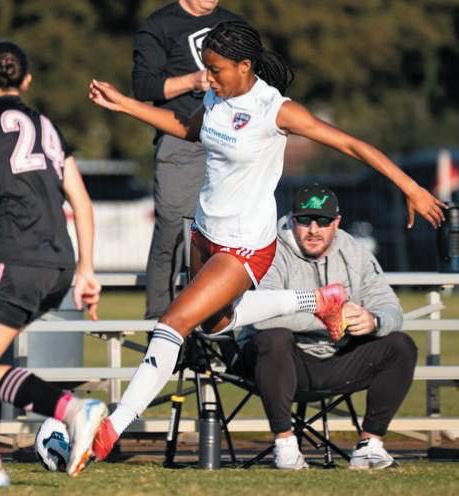

Varsity sports teams often consist of young talent as underclassmen step into key roles traditionally held by juniors and seniors.
This trend is in part due to small class sizes of around 125 students per grade, creating an increased need for underclassmen to fill player shortages at the varsity level compared to larger schools.
This opens up more opportunities for talented young athletes to compete at higher levels alongside their older counterparts. Three student-athletes in particular are excelling in this environment.
Eli Sims
Sophomore Eli Sims is a returning varsity player on the boys varsity basketball team. Sims started playing the sport at a competitive level in fourth grade.
Since the upperclassmen on the varsity team have more experience than him, Sims says that he has to work hard and continue to exercise so he can stay competitive on the court physically.
“The room for error isn’t big so we have to go on the court and make an impact immediately,” Sims wrote in an email.
Sims also says that he has more responsibility and a bigger role on the team compared to last year.
“[Head Coach Joey Sims] trusts me more so I get more playing time, and he also trusts me to hit big-time shots in important games,” Eli Sims wrote. “I had to work to get there.”

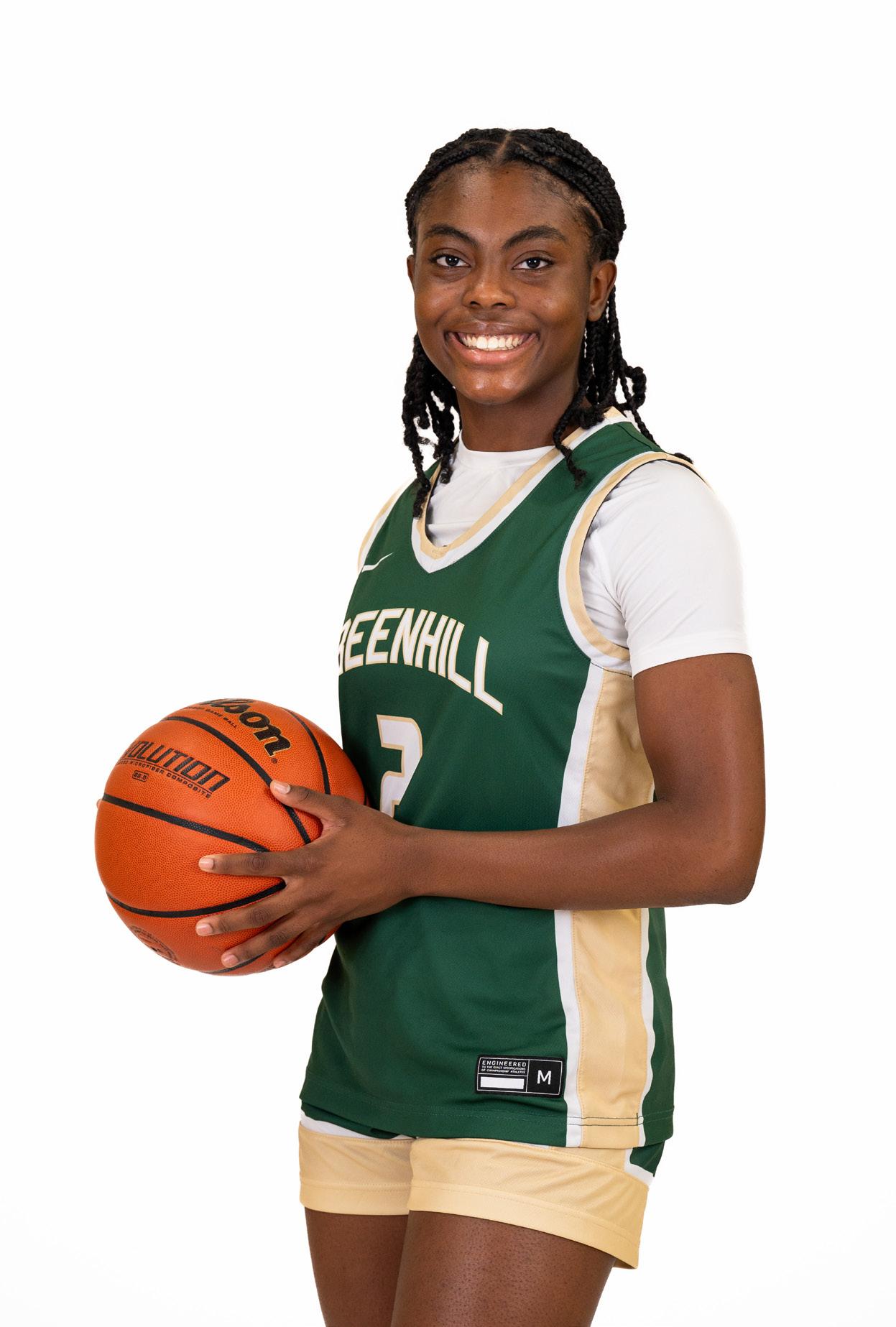
Freshman Eden Collins followed in the footsteps of her brother after watching one of his soccer games, and she decided to play the sport herself at the age of four under the mentorship of her father.
Now she is one of six freshmen, including both permanent and rotating members, on the girls varsity soccer team.
“My role is to be supportive and understanding of the upperclassmen girls who are experienced and to work hard so I can help them and the team do well,” Collins said.
Collins says there is some pressure being a freshman on a varsity team as many of her opponents are committed to play at the collegiate level as well.
“I get through this pressure and stress by knowing that I have people supporting me – my friends, my parents, my coaches, and my faith,” Collins said. “I’m also confident in my game which helps too.”
Collins also plays competitively as part of a club team outside of Greenhill.
“I get to school earlier in the mornings so I can do work, and I’ve learned how to take advantage of Hornet Block and breaks,” Collins said.
Collins says that girls soccer Head Coach Laura Flanagan has been instrumental in her development as a player and a teammate.
“[Flanagan] really takes the time to understand my game and my needs as a player,” Collins said. “She takes time to work with me and help me balance my school soccer and my club soccer which has helped a lot.”
Last year, the team had 10 seniors who graduated and two who are currently playing soccer at the collegiate level. Collins says this opened up opportunities for younger players to play on varsity.
“The team definitely has a lot of potential this year,” Collins said. “I hope to continue to use my voice and my strength and my ability to bring the team together so we can be united.”
Collins says she has high hopes for herself and the team this season at the Southwest Preparatory Conference championships.
“Ever since I joined Greenhill, I noticed that there
weren’t many SPC soccer titles on the banners in the gym,” Collins said. “I want to put one up there.”
Sophomore Ava John first started playing basketball at the age of five.
“I started because I watched basketball on TV a lot with my dad,” John said. “Ever since, it has been something that I really enjoy and want to get better at.”
John was selected to play on the girls varsity basketball team as a freshman and was put in the team’s starting lineup.
Despite being one of the youngest on the team, John says she felt welcomed and in an environment where she could thrive.
“The upperclassmen on the team are really nice and they care about bringing the team together and making sure everyone is included,” John said.
This year, the team consists of 13 members, seven of whom are underclassmen. John says she does not feel that the grade differences affect the dynamic of the team.
“All the coaches treat us all the same and give us opportunities to grow regardless of what grade we are in,” John said.
Head Coach Darryn Sandler ’95 says the goal of the coaching staff is to help its members reach their potential while also approaching the sport with a growth mindset.
“If everything is equal, varsity players should have the best work ethic, be the best teammates and be the most skilled players, so it doesn’t really matter what grade they are in,” Sandler said. “[John] is a leader on the court and is very skilled.”
John also plays on a club team in the spring and summer to further develop her craft and stay in shape.
Sandler says he is excited to see how the underclassmen on the team, including John, will grow and develop as they get more experience on the varsity floor.
“Our team has a lot of potential this year and if we work unselfishly and towards the best interests of the team, we can accomplish a lot,” Sandler said.

President-elect Donald Trump claimed that the word “tariff ” is “the most beautiful word in the dictionary” in an interview with Bloomberg News.
But does the average American voter really understand what tariffs are – or what they will look like under Trump’s presidency? Judging by the wave of confusion and shock following Trump’s tariff announcements post-Nov. 5, the answer is unclear.
One thing is for certain, however. Trump’s tariffs won’t have a huge positive effect on the personal finances of the average American voter – at least not the effect he has touted throughout his campaign.
There will be no massive price drops, new companies won’t be arriving in the United States “right away,” illegal drug trafficking will not immediately cease and “all Illegal Aliens” will not “stop this Invasion of our Country,” as Trump posted on his social media platform, Truth Social.
While it is true that tariffs can be an effective tool for increasing pressure on oppositional actors, the way Trump has framed them to the American public is decidedly misleading. They are not a magical and immediate fixer-upper; in reality, they are far from an apt solution to America’s economic problems.
In the days following his victory in the presidential election, Trump announced various tariff policies that he has vowed to enforce on Jan. 20, his first day in office. He plans to pass an executive order which will place a 25% tariff on all products entering the U.S. from both Mexico and Canada. Additionally, he says he will raise existing tariffs on China by up to 10%.
These three countries represent almost half of America’s imports. While tariffs are typically dished out as economic consequences for uncooperative states, it seems as though tariffs may have far more negative effects on American citizens in comparison to the economies of Mexico, Canada or China.
For the U.S., Canada plays a key role as a leading supplier of crude oil and natural gas. Mexico, in recent years, has emerged as a significant exporter of cars and auto
parts. China remains a major exporter of electronics, including smartphones and laptops, which are integral to the U.S. market.
In a statement made to NBC News, the National Retail Federation stated, “The last thing Americans want is upward pressure on their family finances. Every single credible, non-partisan research project related to raising tariffs on our trading partners proves one thing: Consumers will pay higher prices for both discretionary and non-discretionary products and services.”
The reality is that tariffs will only drive up the cost of living for the average consumer. According to the Budget Lab at Yale University, a nonpartisan research center, the cost of living will likely increase by at least $1,700 annually per household under Trump’s tariffs, which is directly antithetical to what Trump claims the tariffs are supposed to accomplish.
By putting tariffs on imports, corporations will be forced to compensate for increased production costs. They will be more inclined to hike the prices of their goods, passing on added costs to consumers. Whether it be higher prices at the pump or at the grocery store, Trump’s policies will be anything but relief for the average middle-class American.
While Trump’s tariffs in his first term did earn the U.S. government $80 million annually, they also cost consumers a total of $1.5 billion per year, outweighing any marginal benefit.
However, all of this still does not take into account the likelihood of Chinese retaliation.
This could include counter-tariffs on the U.S., a cut in U.S. agricultural exports and a tightening of export controls on key U.S. industries. China will also likely lash out at American companies based in China via stringent anti-foreign sanctions, which include fines, regulations and lengthy approval processes.
While some voters might have bought the engaging words and strong declarations from Donald Trump, soon they will face the reality of his economy – one that doesn’t seem to favor the average American citizen.

From the devices we use, to the clothes we wear, much of what sustains our lifestyle can easily be weaponized against us.
China, a strategic competitor with the U.S., is the largest manufacturer of technology and produces over 65% of the world’s clothing. The United States’ large reliance on foreign goods, particularly from geopolitical competitors, like China, exposes the U.S. to economic vulnerabilities during times of global distress. All U.S. consumers could suffer at any moment.
Since 1985, the U.S. dependence on Chinese imports has grown from $3.85 billion annually to a staggering $427.23 billion in 2023 according to Statista.
Yes, consumerism has grown since the 1980’s, but the spending jump since then has been alarmingly significant. American consumers spent $2.71 trillion in 1985 and $17.51 trillion in 2022, according to the U.S. Bureau of Labor Statistics. This spike mainly occurred in the years 20002010, when Chinese imports to the U.S. increased by 110%. according to the World Bank.
All of this is to say: Chinese imports aren’t bad.
China is the cheapest source for 29% of all American imports, according to the Federal Reserve of St. Louis. So, for consumers, the cost of everyday goods has declined substantially. Looking at the situation from a macroscale, one can easily see that a shift away from reliance on Chinese goods looks to be costly and difficult. This shift is not impossible though.
As consumer prices have dropped, our reliance on China has grown significantly, creating a dangerous dependency.
Given that China is not a trusted ally, due to various direct conflicts with intellectual property theft, trade unfairness, cybersecurity threats and several territorial disputes, this opens the door for potential manipulation in critical industries.
Tariffs are a powerful weapon in addressing unfair trade practices and reversing our overdependence on China; they are a tool of bullet-free economic warfare.
Tariffs could help counter foreign economic manipulation and address the U.S. trade deficit. The United States imports significantly more from countries like
China than it exports, creating a deficit, and vulnerability in times of crisis or essential need. These nations could retaliate during conflicts by raising prices on goods critical to the U.S., knowing that we have little choice but to pay.
This unsustainable reliance on foreign goods has left American manufacturing jobs to suffer. The percentage of Americans working in manufacturing has plummeted from over 17% in 1985 to just 8.31% by 2020, according to the U.S. Bureau of Labor Statistics. Reshoring production and implementing strategic tariffs brings back critical manufacturing jobs that strengthen the American workforce.
Many fear that the U.S. economy could face significant inflation as a result of Donald Trump-imposed tariffs, making essentials unaffordable for many Americans. But tariffs on Chinese imports accounted for only about 0.1% of U.S. consumer price inflation in 2019 according to the Federal Reserve Bank of San Francisco.
The other concern isn’t just about inflation, it’s about the potential for isolationism. As our reliance on other countries decreases, and other countries start adapting, the U.S. risks being left behind in global trade and alliance conversations. However, tariffs may not cause isolation as countries may try to engage in strategic negotiations, fostering dialogue and cooperation.
It’s also worth remembering that Trump enacted tariffs in his previous term, and the Biden administration kept these tariffs in place. If Trump’s new tariffs are successful, they could reverse the current cycle of unfair trade practices by regulating things like illicit goods, forced labor and theft of sensitive technologies.
It might turn out that Trump’s tariff threats are only an instrument of leverage, aimed at pressuring foreign powers to proactively communicate with him before he enters office. This approach of using intimidation could encourage foreign dialogue and collaboration, as leaders seek to negotiate with Trump, fostering possible allyships.
The bottom line is that tariffs, although a seemingly daunting economic move, can help the U.S. reverse trade deficits and create connections. Right now, there is nothing else in place that can accomplish this goal.
– senior Aman Jaleel, Student Council president
Leadership is not only a position, but a life skill that positions students for success. At Greenhill, students have many opportunities to become leaders both inside and outside the classroom, through activities like Student Council, Honor Council, clubs, sports teams and extracurricular activities.
The Evergreen spoke to several Upper School students about their experiences in various leadership positions on campus. Here’s what they had to say about learning to succeed in leadership roles:
How did Greenhill shape you to become the leader you are?
“I have been at Greenhill since Lower School and the teachers have always encouraged us to create connections with everyone and lead by example. When I got to high school, I was able to implement these values.”
– sophomore Paylin Barnes, member of Honor Council and Student Inclusion Council
“Greenhill has taught me to value everyone’s opinion since a young age and to not be afraid to reach out to teachers and students.”
– sophomore Valentina Rojas, vice president of the Class of 2027 and secretary of the Latinx Student Union
What qualities do you think make a strong leader?
“I think someone who is dedicated to what they do. I feel like it really benefits everyone in the program and makes it more fun.”
– junior Sophie Carruthers, Link Crew leader and a junior chair of the Greenhill Charity Fashion Show
“A lot of people think that you have to be a good speaker, but you also have to be a good listener.”
What factors help you succeed?
“Time management is very important. I try to look at the week ahead and create a plan of what I want to accomplish every day.”
– junior Sophie Carruthers
“Definitely communicating and working with other people. As the secretary,
to think that I am just another student who is leading the assembly.”
– senior Aman Jaleel
“The ability to listen to others and understand different perspectives is very important. I always try to listen to my friends’ and peers’ perspectives and then I will try to bring them up in meetings so that everyone’s problems can be considered and addressed.”
– sophomore Paylin Barnes

What motivated you to step up and take
“I simply felt passionate about all of the groups I was already in, and I felt like I could make a difference in them. For StuCo, I really wanted to facilitate more engagement in the grade and the Latinx Student Union is a space that means so much to me and I really wanted to be a part of what makes it such a welcoming place to be.”
– sophomore Valentina Rojas
“The past couple of years I have been involved in the Hill Guide program and I really enjoyed it, so I wanted to try and get a role to help other people also have a positive experience.”
– junior Sophie Carruthers
What would you say to other students trying to get into a
“Try going to different club meetings and sign up for new activities. Once you find something that you are passionate about and truly interested in, then you will want to be more
“I would say just try it. You don’t lose anything by running for it and passion goes
Greenhill places a strong emphasis on well-rounded achievement across disciplines, encouraging students to participate in fine arts, athletics and rigorous academics – all of which demand significant time and commitment.
The end result, in our view, is that many Upper School students feel overworked and overwhelmed as they strive to balance challenging course loads, extracurriculars and sports simultaneously.
To help alleviate some of this stress, Upper School administrators introduced the 48-hour grace period policy in the 2022-2023 school year. According to the Upper School handbook, the policy is straightforward: “If a student is unable to meet [a] deadline, students will have a 48-hour grace period from the date and

time any assignment is due to submit the assignment, with no penalty, and no need to inform the teacher.”
The policy provides standardized extensions for out-of-class “summative” assignments, such as papers, projects or presentations, allowing students extra time when needed. It was developed as part of the administration’s effort to create a supportive, flexible system for managing academic demands.
In addition, the policy relieves teachers of the burden of deciding when to grant extensions, creating a consistent approach across the board.
However, issues arise when teachers do not abide by the handbook policy and try to come up with their own solutions to circumvent the 48-hour grace period.

Some teachers require a student to give them advance notice through email if they plan to utilize the 48-hour grace period. Other teachers utilize a system of “built-in” extensions on assignments, and subsequently prohibit students from using the grace period.
These variations, none of which are mentioned in the handbook, create confusion among students about what the 48-hour grace period truly entails. Ironically, this
ambiguity undermines the very purpose of the policy: to provide clear and uniform support across all classes, helping students manage their workloads with greater predictability and less stress.
Despite being aware of the policy as spelled out in the handbook, many students feel hesitant to bring it up with teachers, fearing a negative reaction that could impact their relationship with the teacher in the long term. Even when students do muster the courage to address the grace period policy, they are sometimes shut down by teachers.
This tug-of-war over the rule has created resentment on both sides. Many students feel as if they are being cheated out of an extension. On the other side, some teachers assume that students are simply using the policy as an excuse to delay or avoid timely completion of their work.
Without a shared understanding and trust in the policy’s intent, the grace period, rather than easing stress, has become a point of contention that affects both teachers and students at Greenhill. We urge Upper School administrators to clarify the policy with teachers, ensuring that they abide by the handbook guidelines. In addition, we urge students to utilize the grace period only in times of dire need, and not to take advantage of the policy that has been so graciously given to us.
EDITORS-IN-CHIEF
Aria Kutty and Evie Kwei
EXECUTIVE
EDITORS
Chloe Nguyen and Christan Park
DEPUTY EXECUTIVE EDITORS
Daniela Hallack and Lyna Kamgang
MANAGING EDITOR
Varun Mukund
ASSISTANT MANAGING
EDITORS
Nora Ahearn
John Hurley
Rory Liu
Kate Ponnambalam
Vedant Subramanian
Jordan Arbuckle
Alexis Chen
ASSISTANT ADVISOR Amy Bresie
ADVISOR Gregg Jones
Have a response? Opinion? Original Idea?
Email the Editors-in-Chief: kuttya25@greenhill.org kweie25@greenhill.org
EDITORIAL POLICY
The Evergreen is an independent, student-run newspaper serving the Greenhill School community. It is printed six times during the school year. Print circulation is 900 copies. Past issues are archived at issuu.com/ghevergreen.
Our staff upholds a code of ethics that values honesty, integrity, accuracy and responsibility. Our mission is to help our community interpret campus, local, state and national events through content written and edited by students.
The Evergreen welcomes letters and emails from readers. We reserve the right to edit submissions for accuracy, grammar and length. The Evergreen will not publish material that we judge to be libelous, or obscene, invades privacy or constitutes hate speech. The staff editorial represents the opinion of The Evergreen staff, not necessarily that of Greenhill School.
ADVERTISEMENTS
The Evergreen welcomes advertisements, but we reserve the right to refuse an ad. Business inquiries should be directed to Ella Sadka: sadkae26@ greenhill.org
CORRECTIONS & CLARIFICATIONS
To request a correction or clarification, please email kuttya25@ greenhill.org or kweie25@greenhill.org

A RANT to the approaching Jan. 1 college application deadline. With the semester wrapping up and the workload increasing, college apps are the last thing we need right now. Everyone, hug your favorite senior!

A RANT to the Dallas Cowboys. We were so excited when both the Dallas Stars and Mavericks made the playoffs last year, and we were hoping the Cowboys would also enjoy a successful season. However, there’s no chance of a Super Bowl appearance this year.

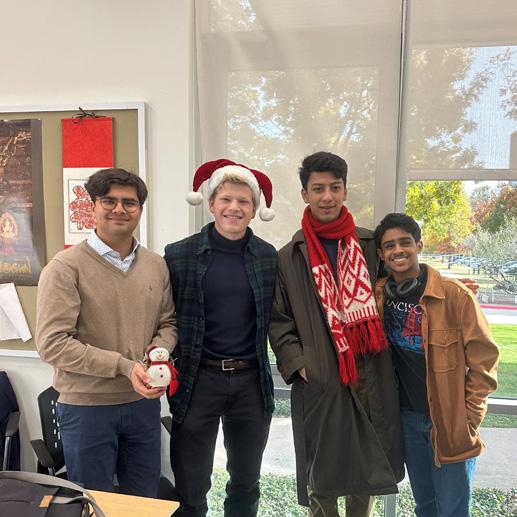
A RAVE to the upcoming Winter Break, a relaxing and rejuvenating few weeks. Is there really more we need to say?
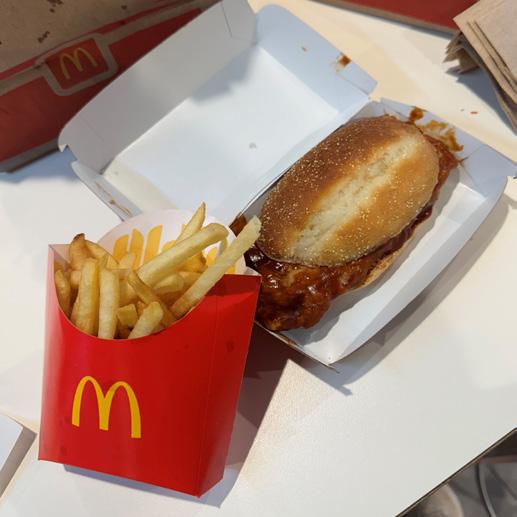
A RAVE to the holiday season. As winter looms, we can feel excitement and joy spread across campus. With Christmas, Hanukkah, Kwanzaa and New Year’s approaching, make sure to wish your friends and faculty a happy holiday before you leave for the break!

A RAVENT to the return of the McRib! The “Farewell Tour” last year really threw us for a spin, but we’re happy the savory sandwich is back. Paired with fries and a crisp Sprite, the combo is perfect.
A RAVENT to the loss of Takis at The Buzz. We’re sad one of our favorite snacks is being replaced by the Veggie Straws Screamin’ Hot flavor, but we’re happy we are safe from the stomach-burning chips and their Red 40 dye.

Across
5. “_____ of Assimilation,” a piece by senior Ana Blankson for the ISAS Fine Arts Festival
6. Character in “Mamma Mia!” played by senior Shreya Chhaya and junior Ruby Garza
7. Sport played by sophomores Eli Sims and Ava John
10. Annual team bonding event for the varsity cheerleading team
12. Exoneree Richard _____, who met with the Upper School Literature of Human Rights class
13. Upper School Director of Design and Innovation Matt _____
14. Upper School Innovation teacher Joseph _____, who coaches the robotics team
Down
1. Month when the Student Council committee on phone policy was formed
2. This year is TeenAge Communication Theater’s _____ anniversary
3. Pianist in the Jazz Combo, senior _____ Agha
4. Senior Sophie Fiedelman, an editor-in-chief of the _____
7. Dessert that the Evergreen Senior Staff ordered at Yard House: Oreo _____
8. Senior Lily _____, who manages the varsity girls basketball team
9. Sport that Upper School math teacher
Melissa Battis began playing in college
11. Item at The Buzz that has increased in price from the past year
With the winter holidays fast approaching, Hornets are buzzing with excitement for their upcoming break. From skiing in France to performing at Carnegie Hall to staying at home with family, everyone has unique plans for their time off. The Evergreen staff asked Upper School students about their plans, and here’s what they had to say:
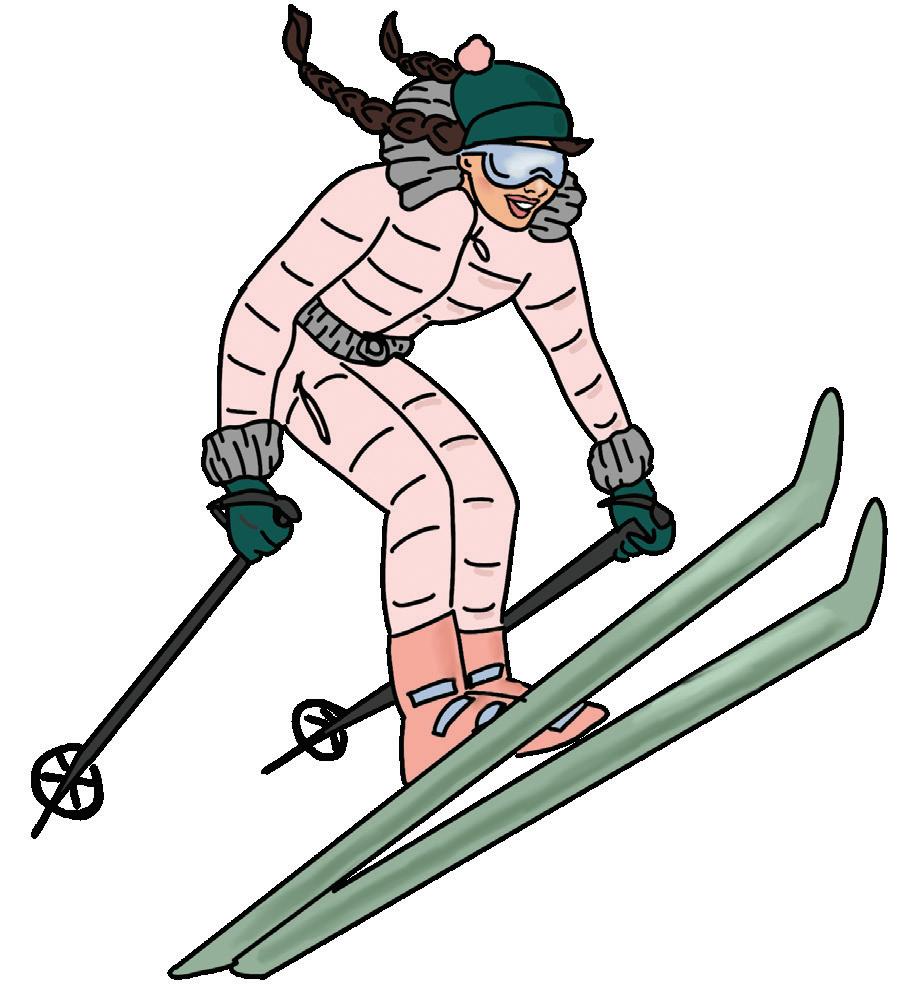
“I am going to France with my close family to go skiing and then we will spend a few days in Spain for my birthday. I’m super excited to hit the slopes again with my dad, mom and two younger sisters. I can’t wait to explore the mountains.”
– junior Aaron Podolsky
“I am staying at home this year to celebrate the holidays with my family. In between all my college applications, my parents want to make sure I have fun with hot chocolate and gingerbread houses.”
– senior Sherry Zhang


“I am going to California to take a break from the busyness of school and to enjoy some time at Universal Studios with my friends. I am most excited for the Harry Potter rides.”
– junior Sanay Nesargi

“I’m going to Big Bend and Marfa during the end of winter break. We’re going because my parents and I enjoy hiking and seeing art exhibits, which West Texas has both of. I’m feeling excited because it’s always a place I thought was interesting to visit and we’re bringing my dog.”

– senior Kendall Poglitsch
“I am staying home because it‛s my birthday. My cousins are coming to town from New Jersey, and we are going to watch movies and eat lots of food. I always look forward to seeing them and we always have lots of fun.”
– sophomore Jordy Wilkofsky
“I am going to New York over the Christmas break to perform at Carnegie Hall and visit some colleges with my family. I am pretty nervous but also excited because I’ve never performed on such a grand stage before.”

– junior Rachel Jiang